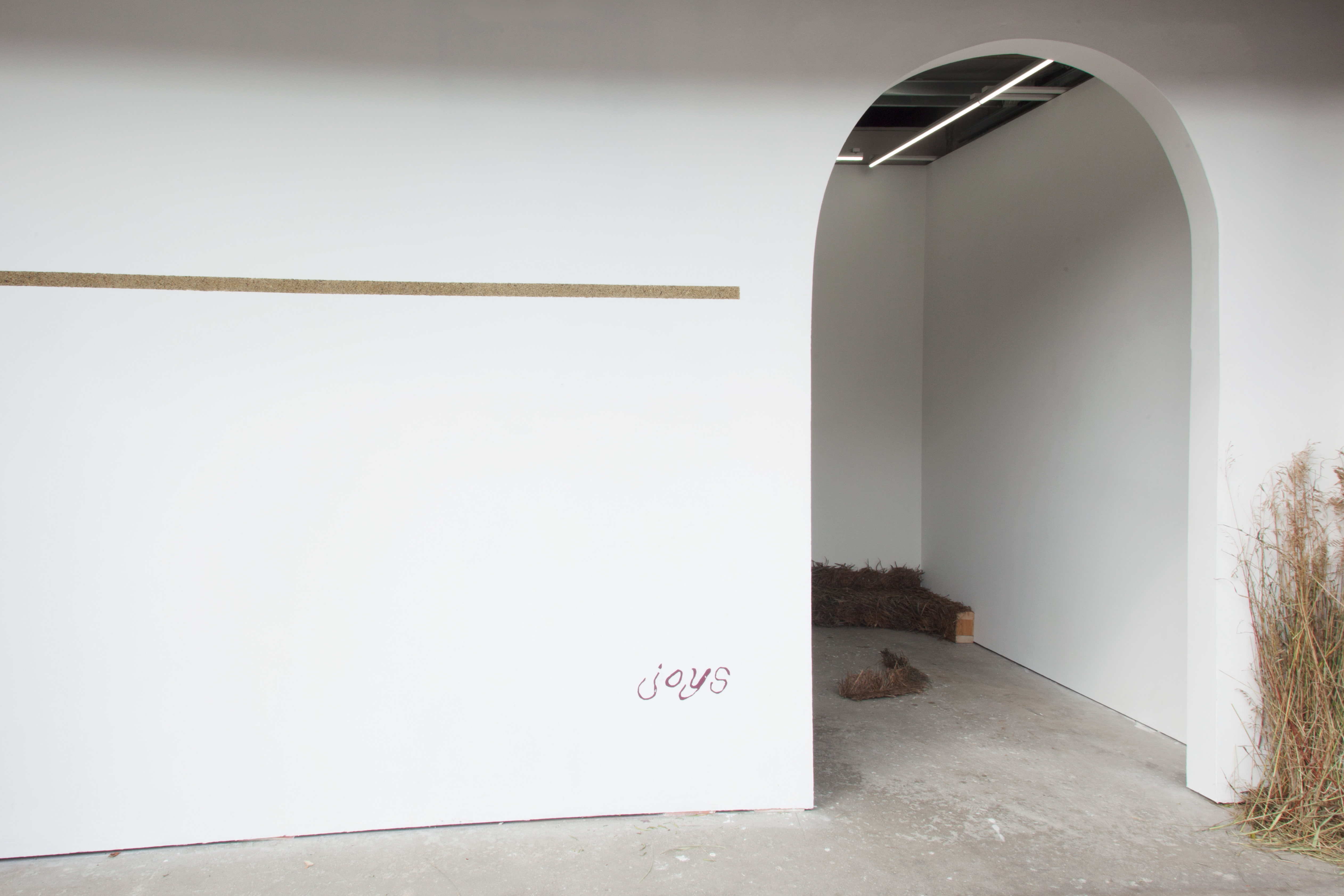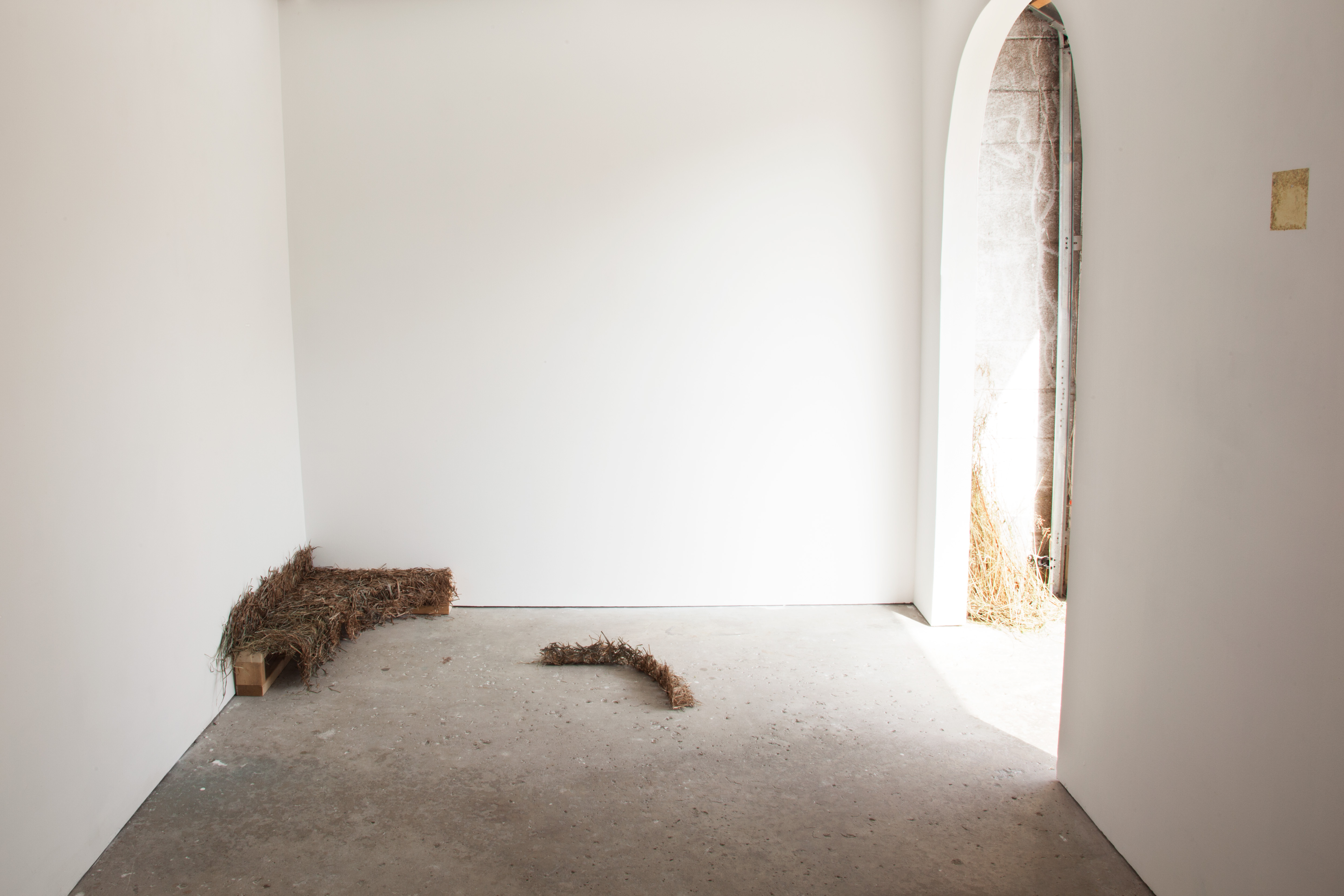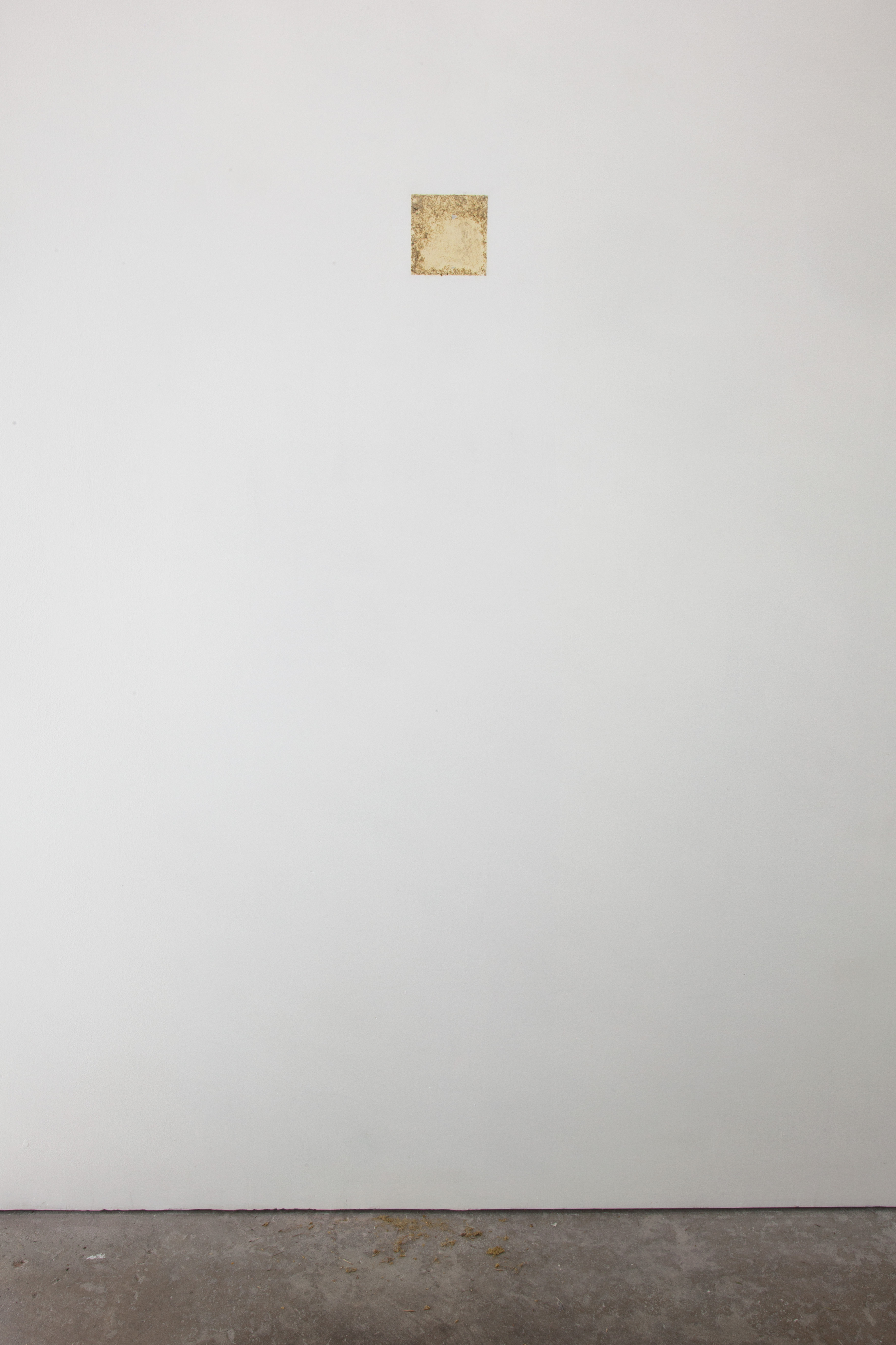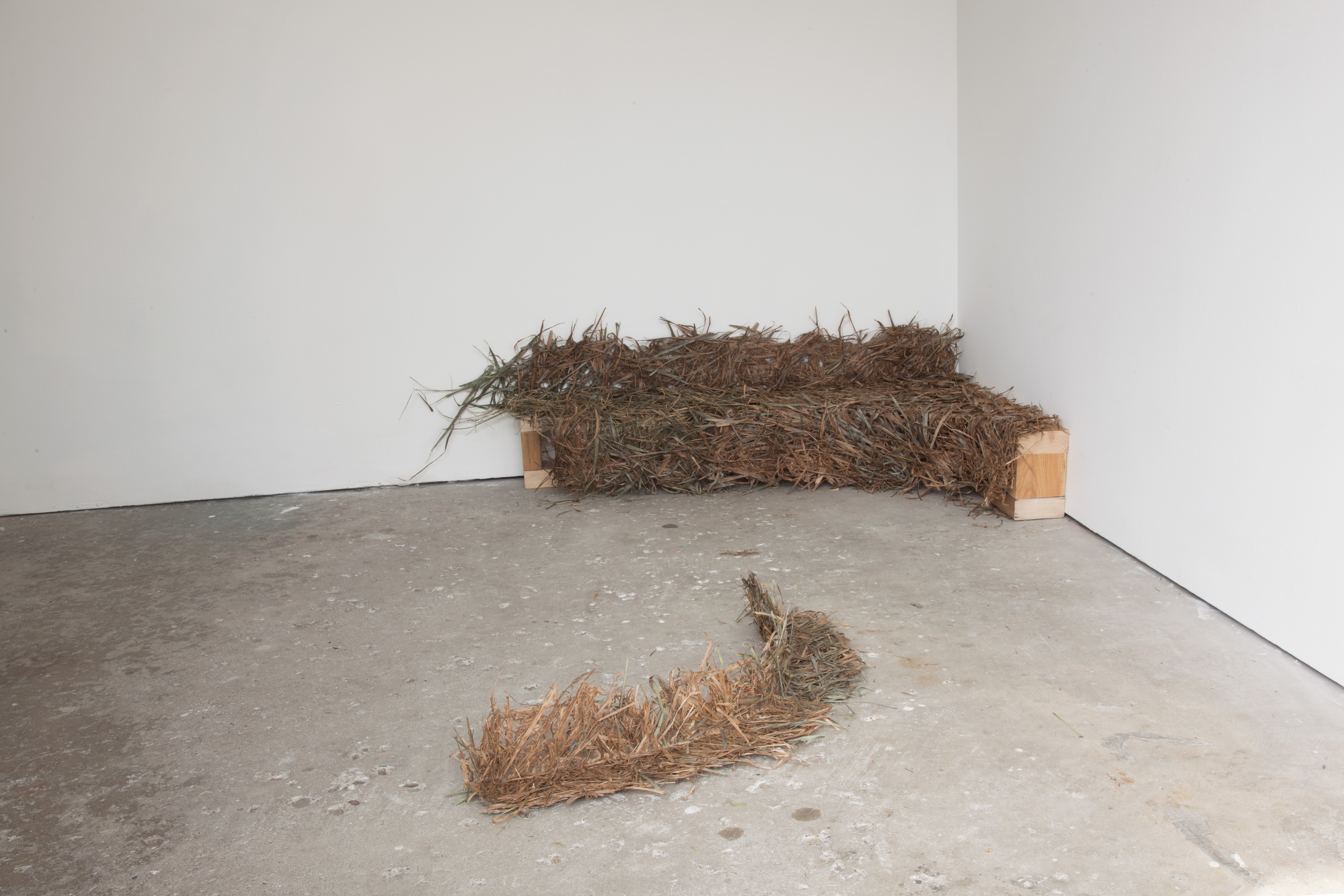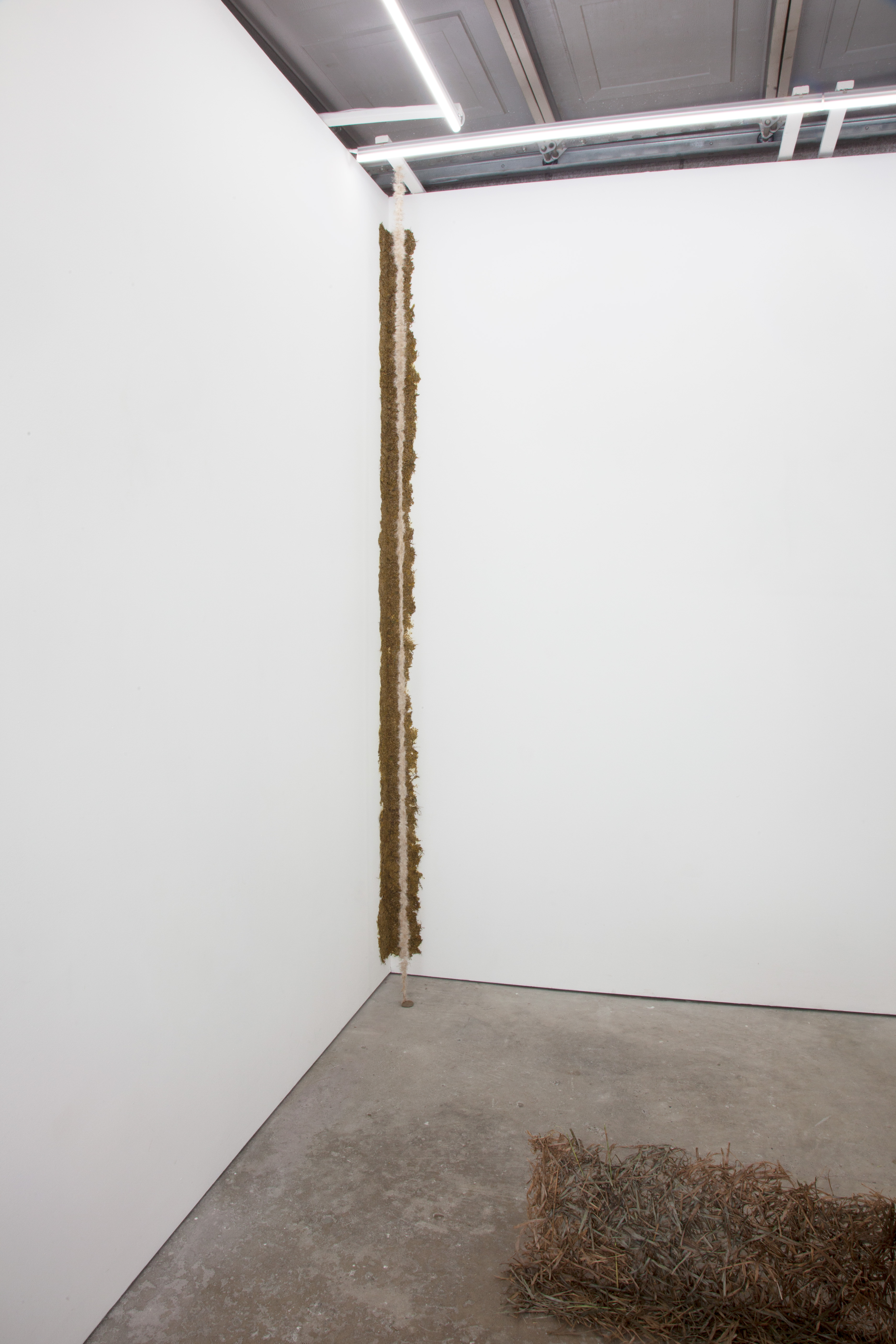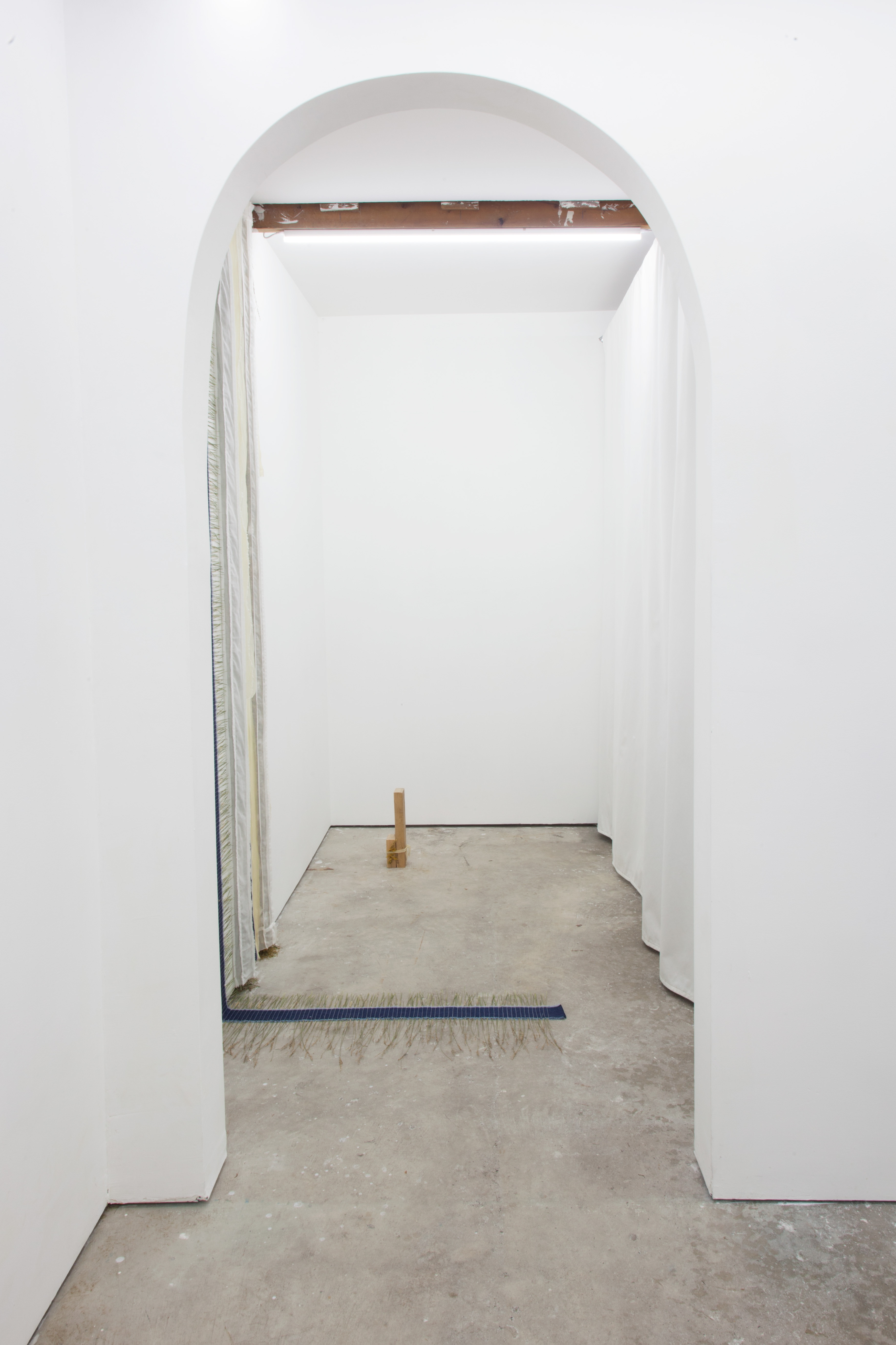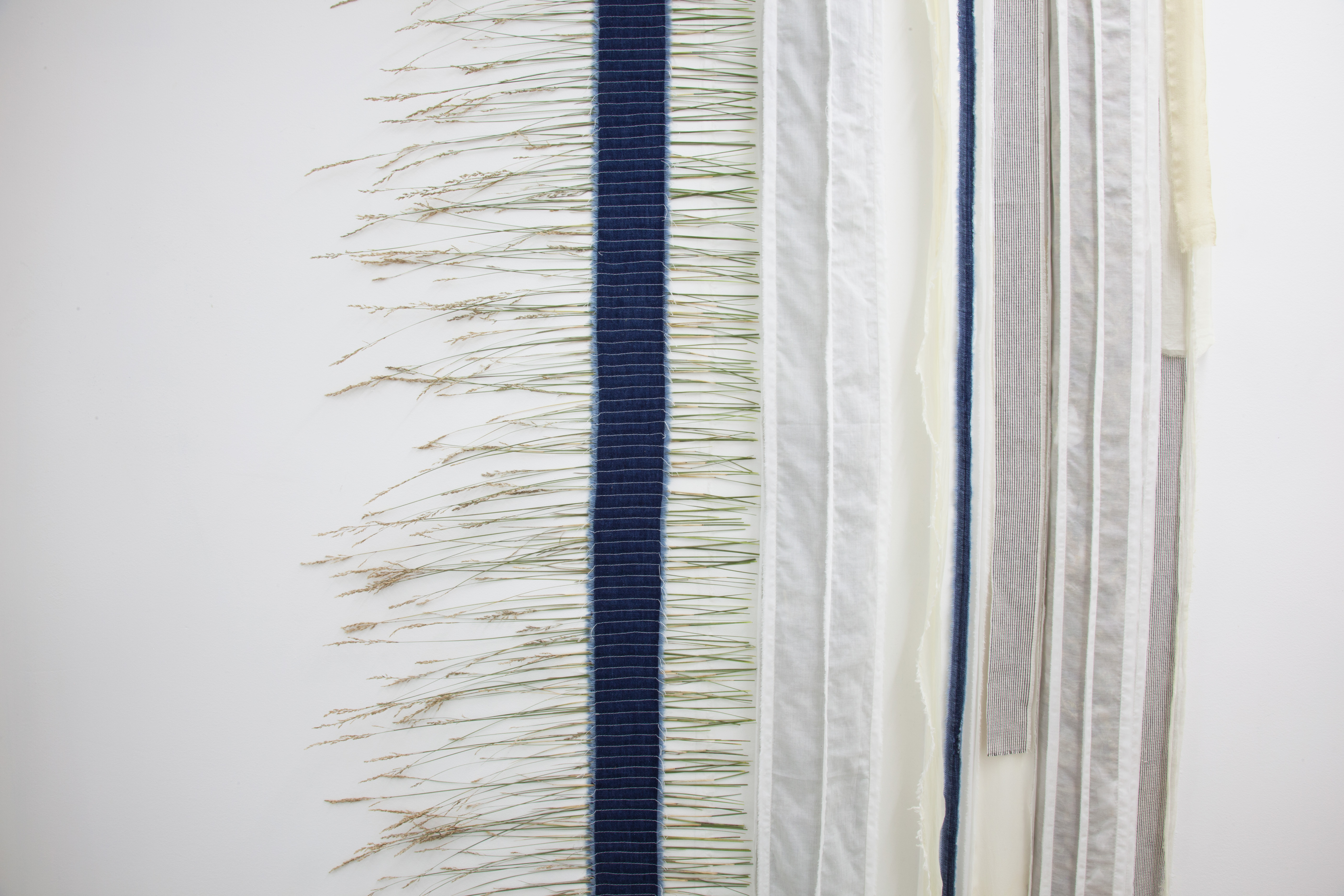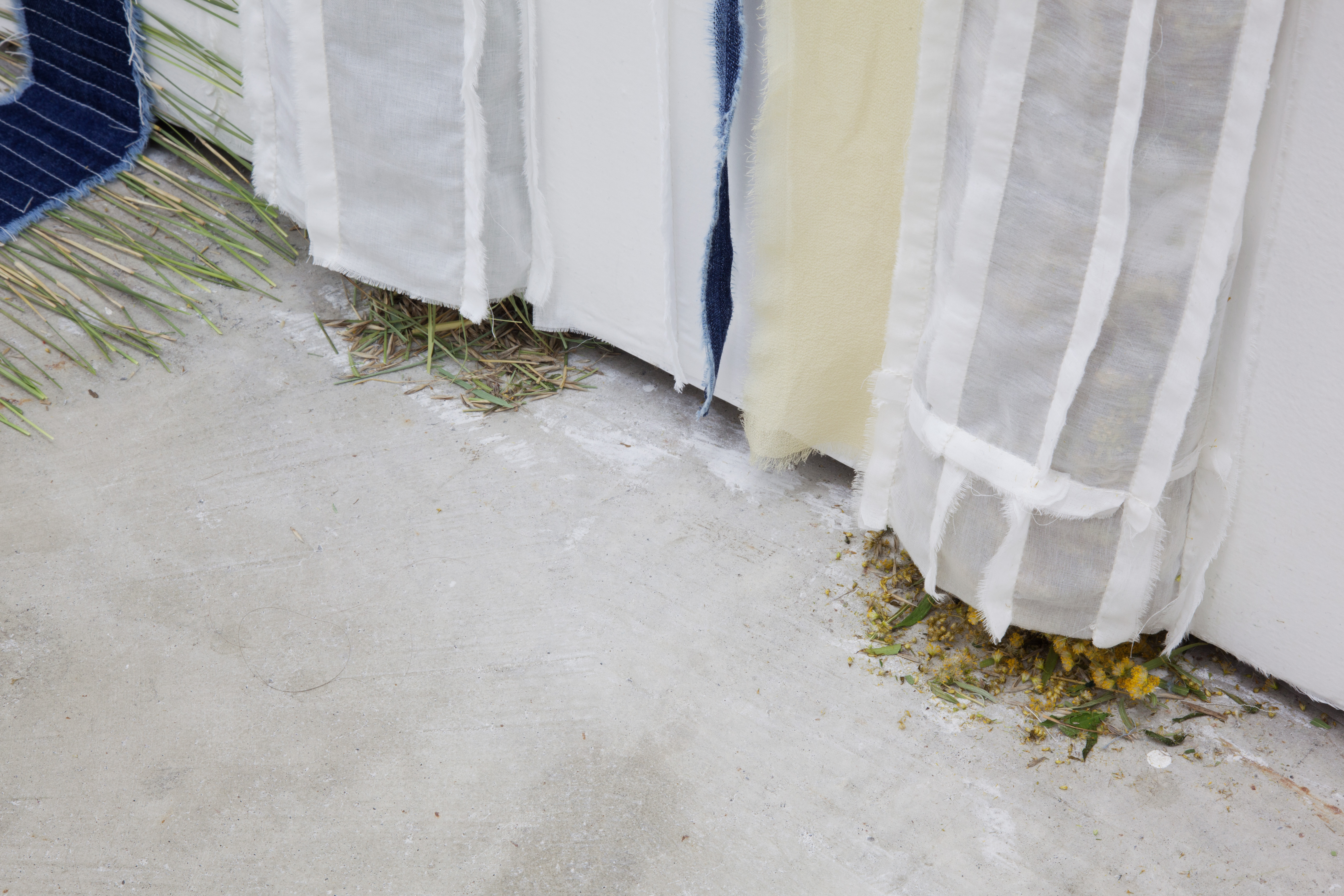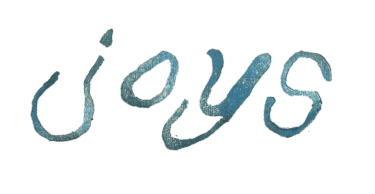
Ginger Chimes: Mamu Mifi
October 18 - November 8, 2024
Everything has meaning because of the love that was there at the beginning
Melting snow trickled to form rivers, miracles, mirages
Phoenix trees, red willow, reeds bent by the river bank
Lotus ponds in morning light
Apples so sweet they stuck to the mouth
Dappled by light from another morning
another’s dream
Pearl to reflect memory
in a quiet environment
A window cocooned in silk or mist
scent as something gained when self unspools
Chain of time, its elemental shine
the basic properties of light
The centre of change is not loss
The root of you that chimes
- Lily Wang
Ginger Chimes presented a new body of work spanning sculpture, textile, metallurgy, silverwork, painting and installation. Exploring individual and shared experiences with AAPI (Asian American Pacific Islander) identity and diaspora. Akin to the rhizomatic roots of ginger, the logic of this exhibition extends horizontally, forming numerous and nebulous connections that perpetuate balanced and a spirit of interdependence. The exhibition also featured an untitled interactive work where visitors were invited to write a childhood memory or an invocation of ‘home’ on a small card and hang it from a wind chime at the gallery entrance.
mamumifi is a multidisciplinary collective developed by two Asian-Canadian artists residing in Toronto working with a mixture of sculpture, textile, painting and mixed media. The duo is inspired by diasporic stories, specifically AAPI as a way of bridging gaps between generations of communities where cultures have been historically suppressed. Ginger Chimes is their first exhibition as a duo.

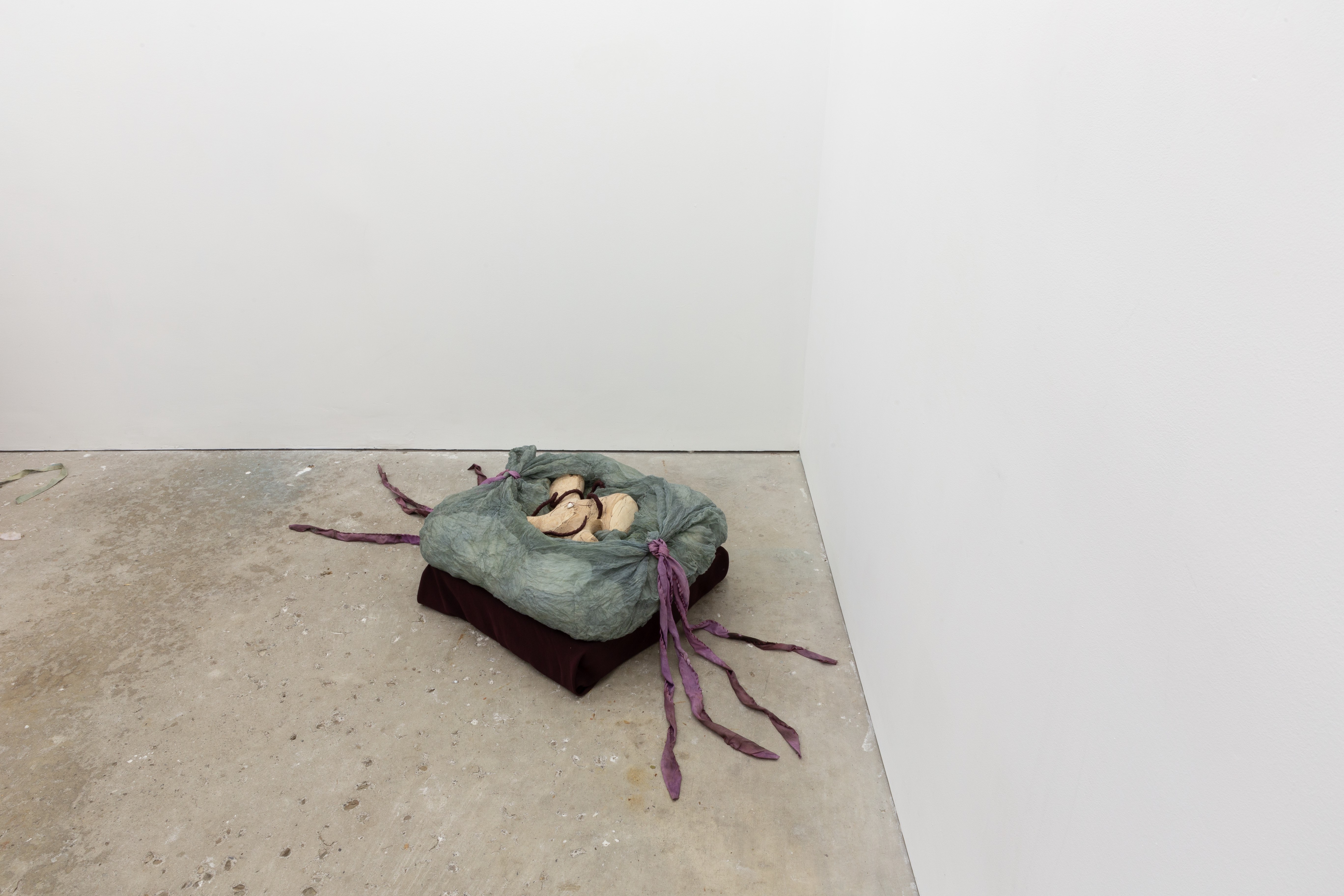

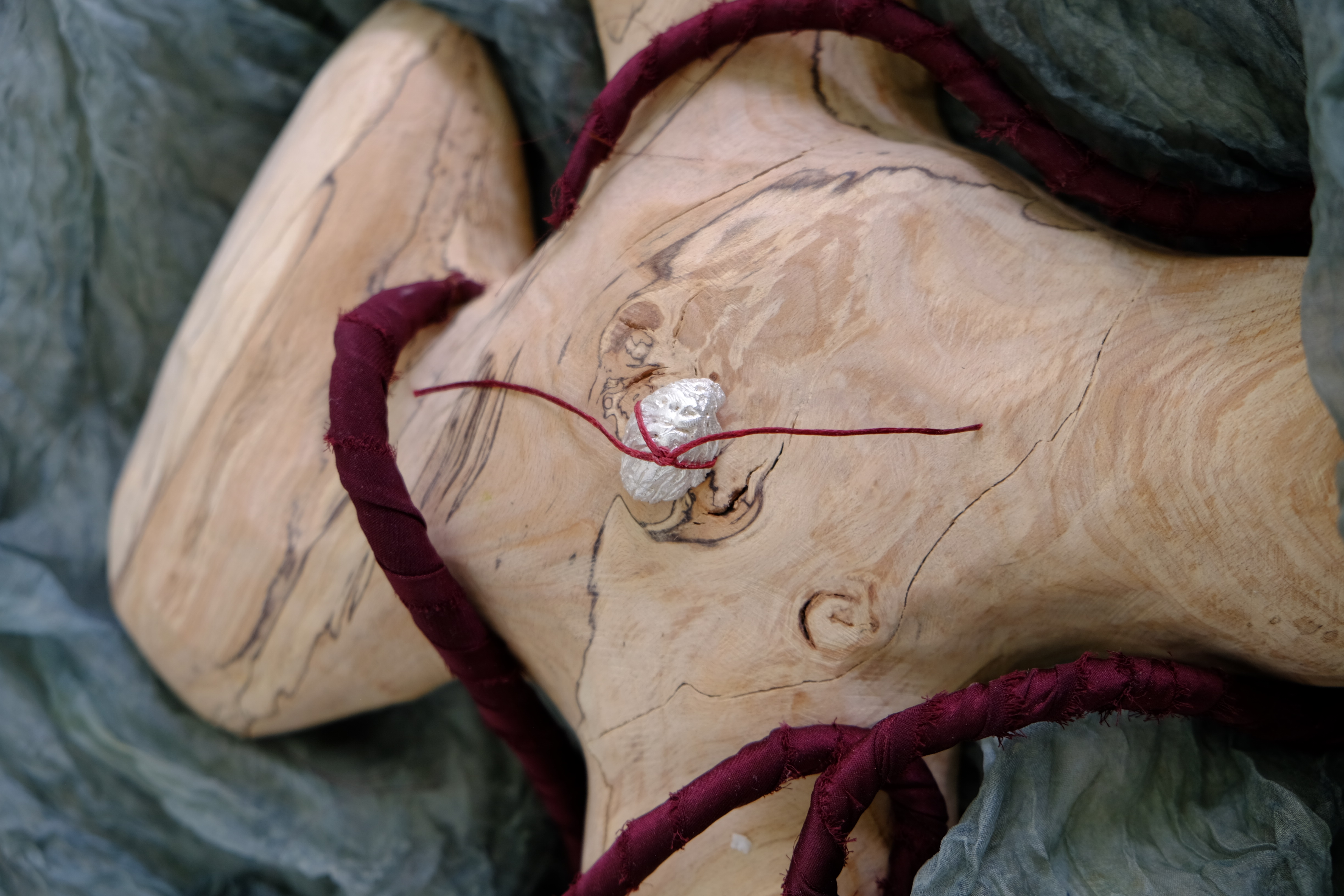

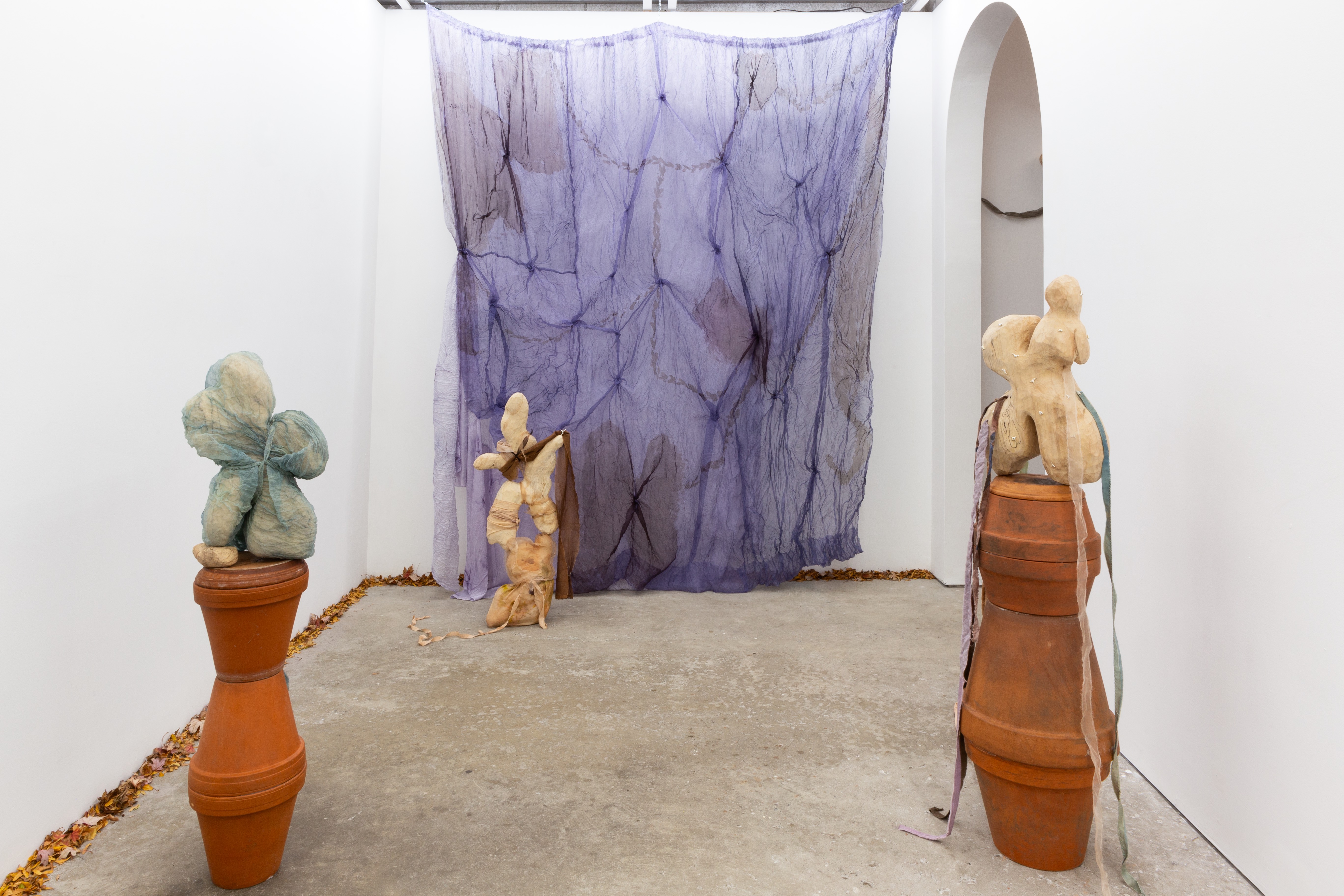
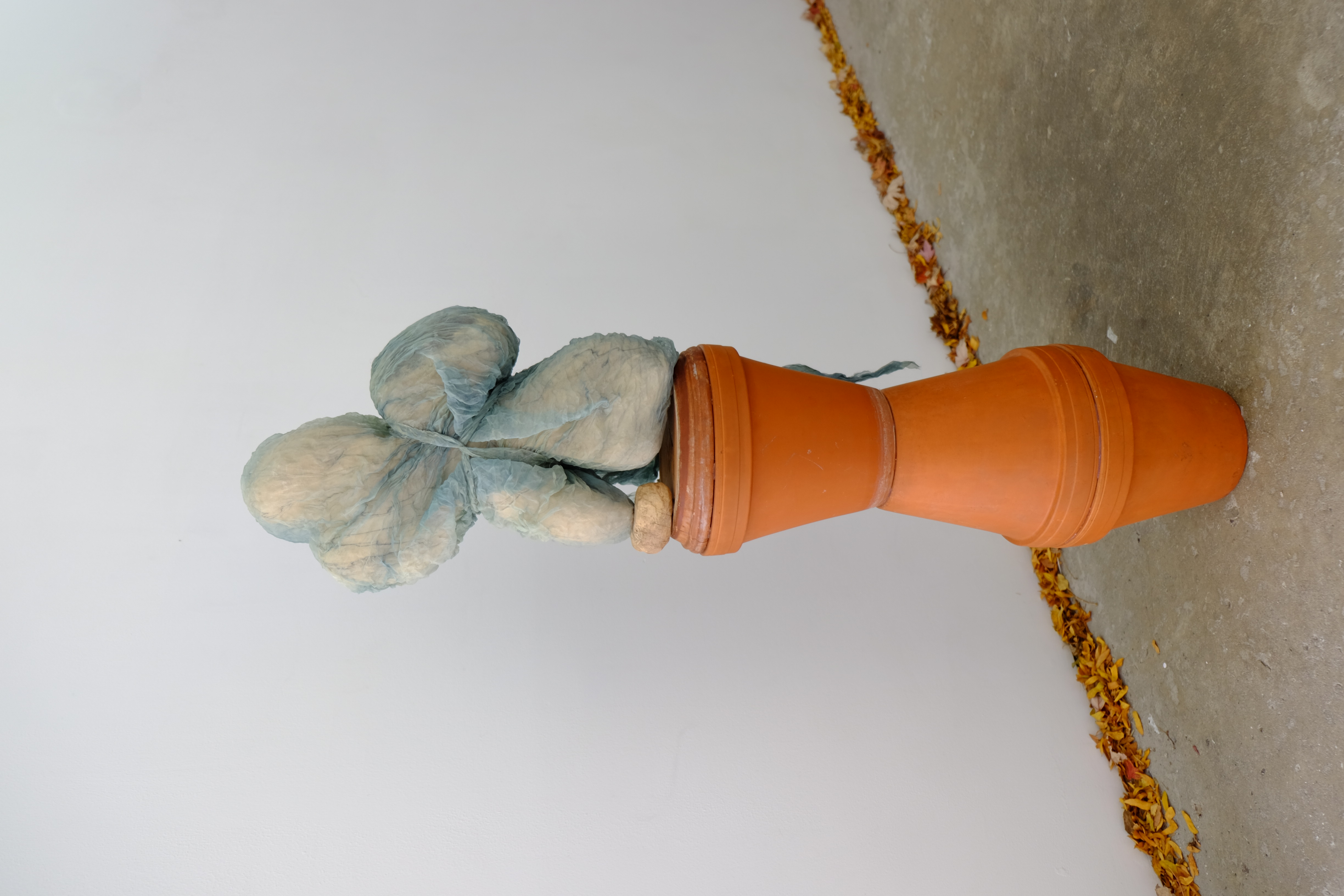
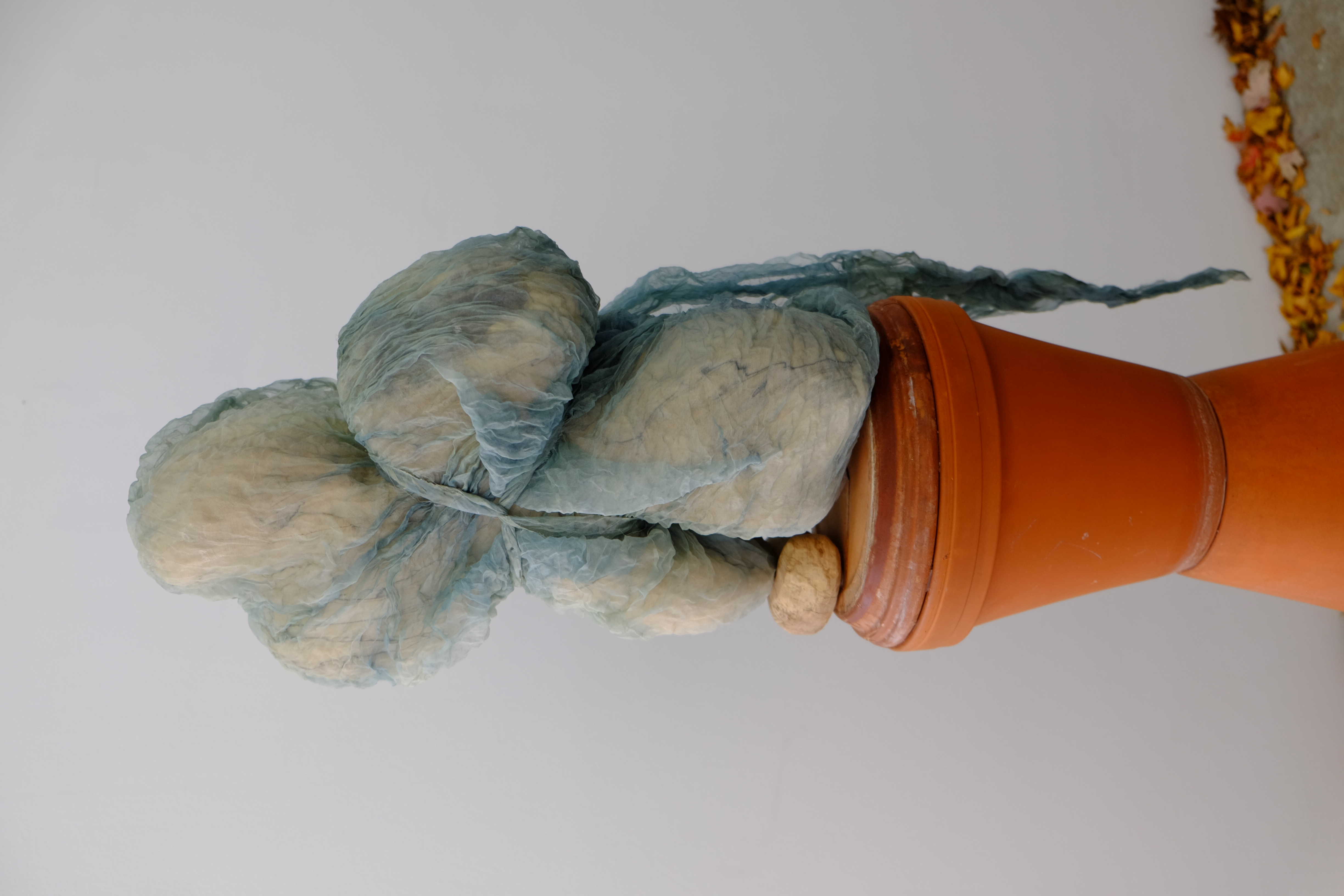

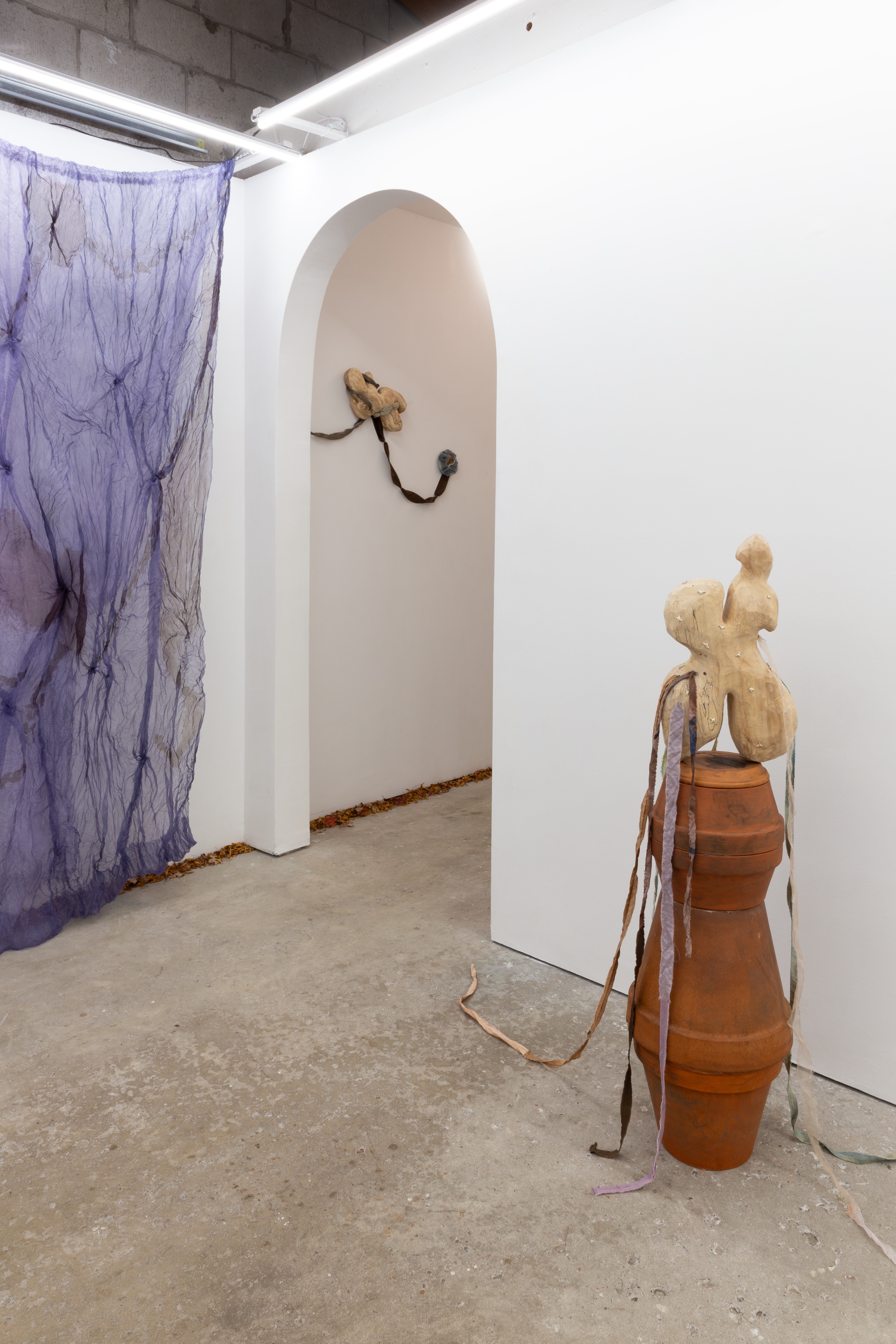
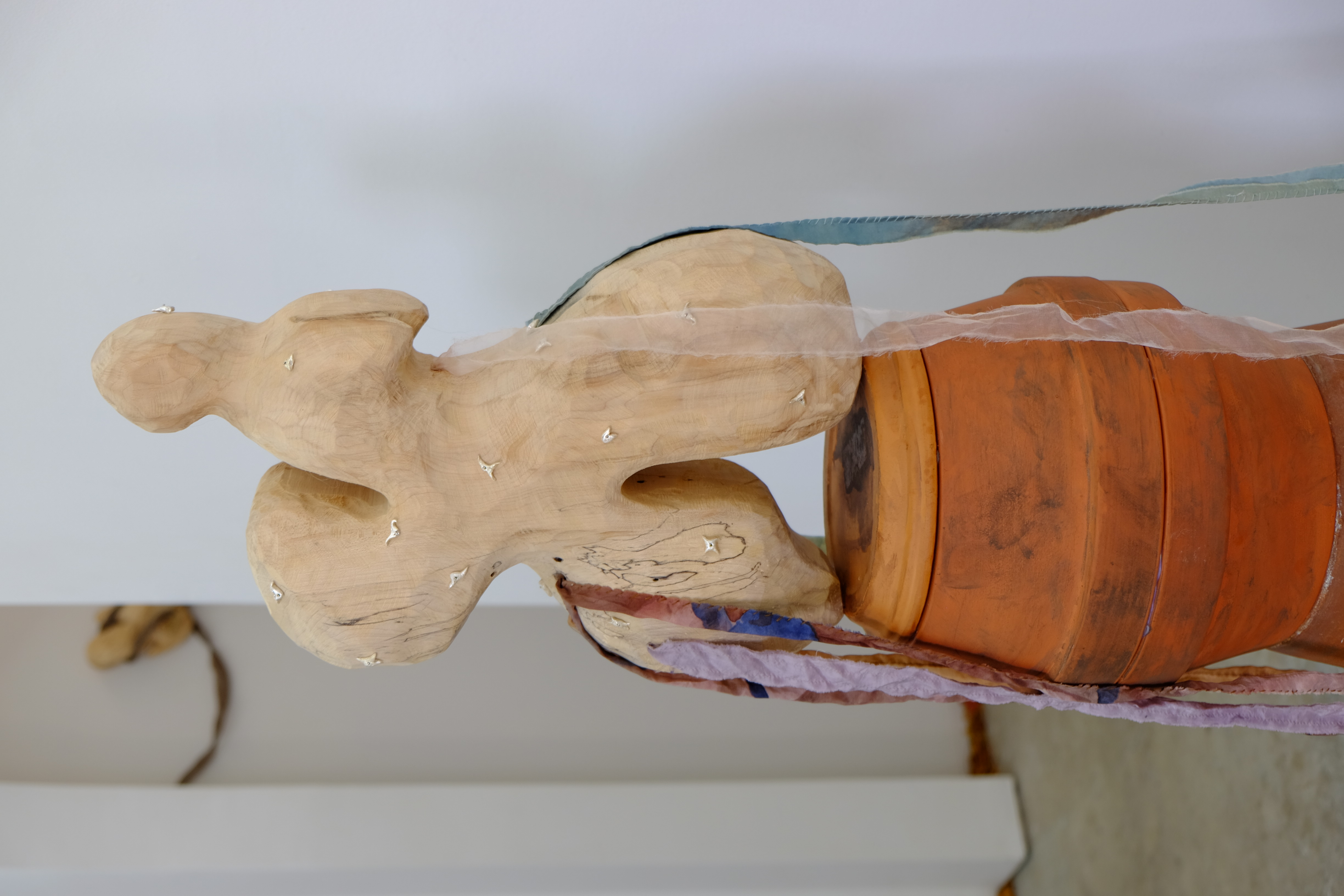

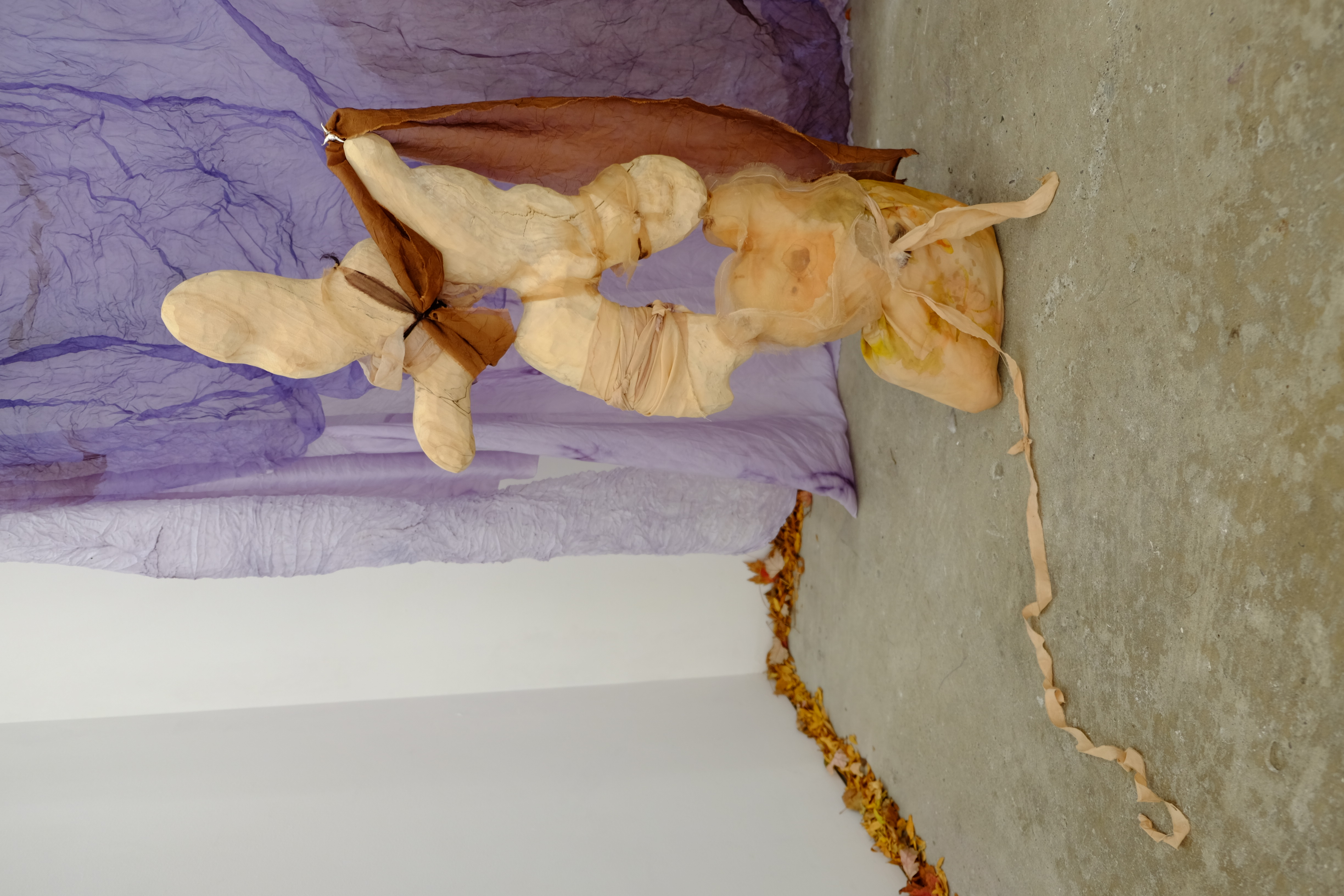
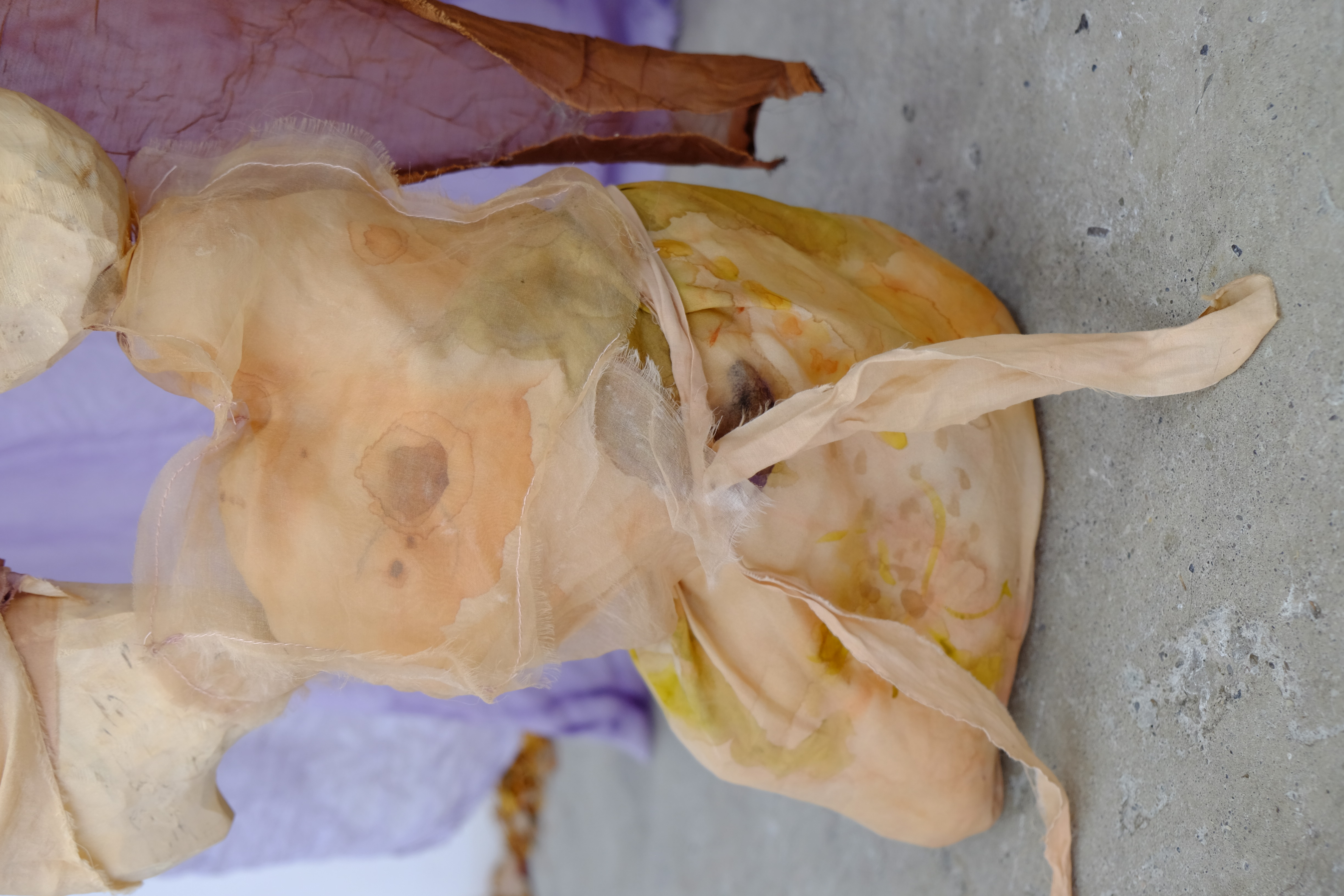
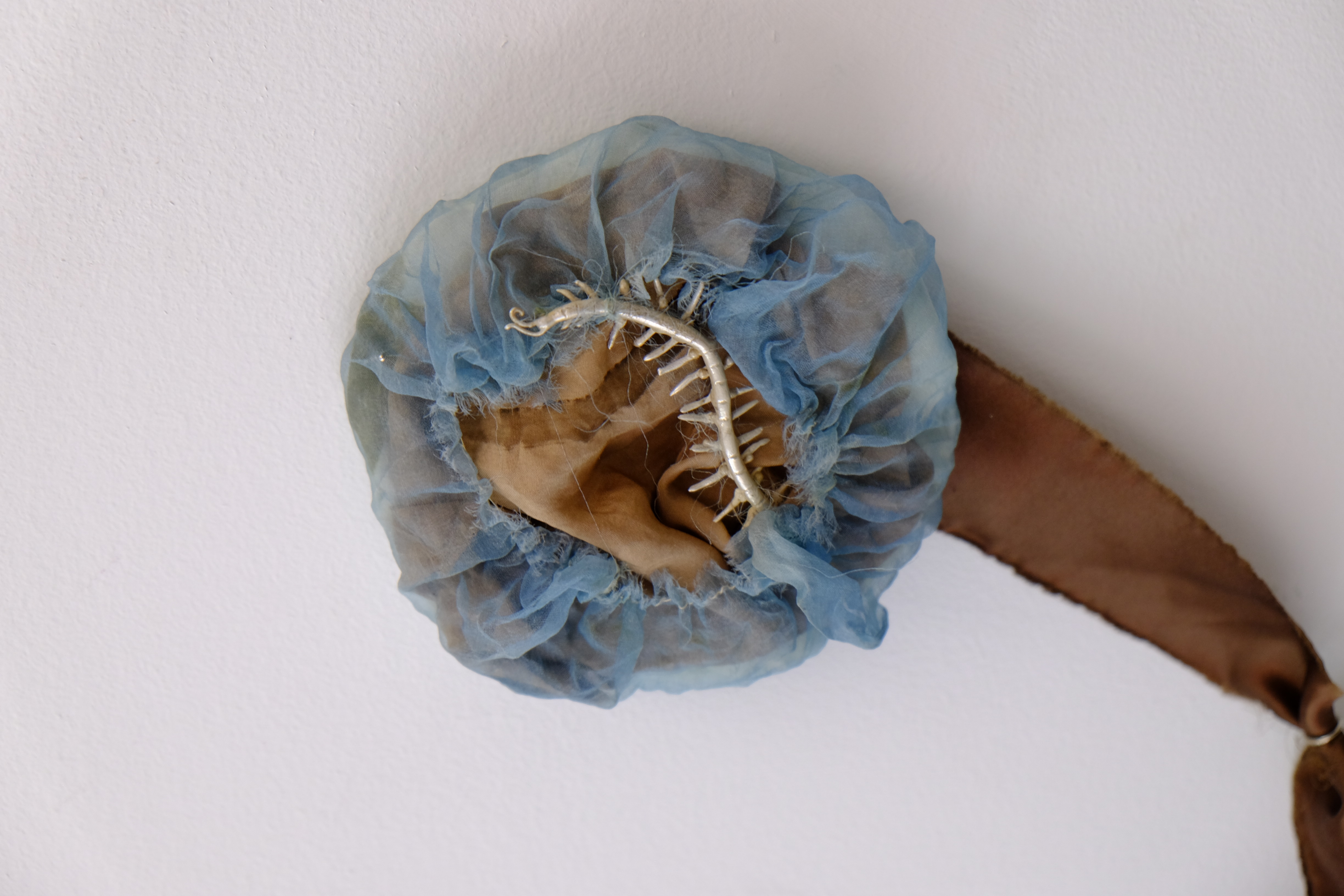



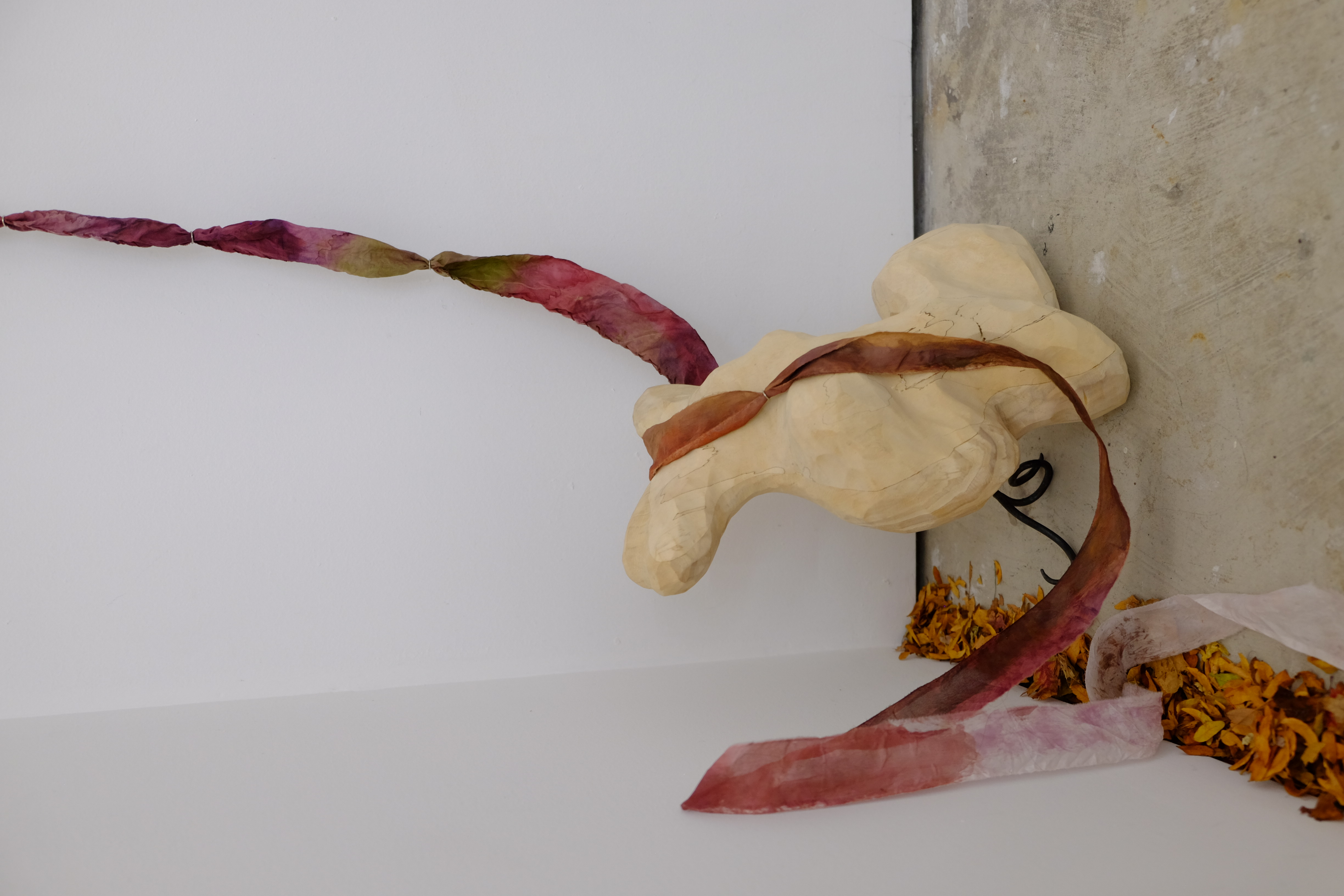
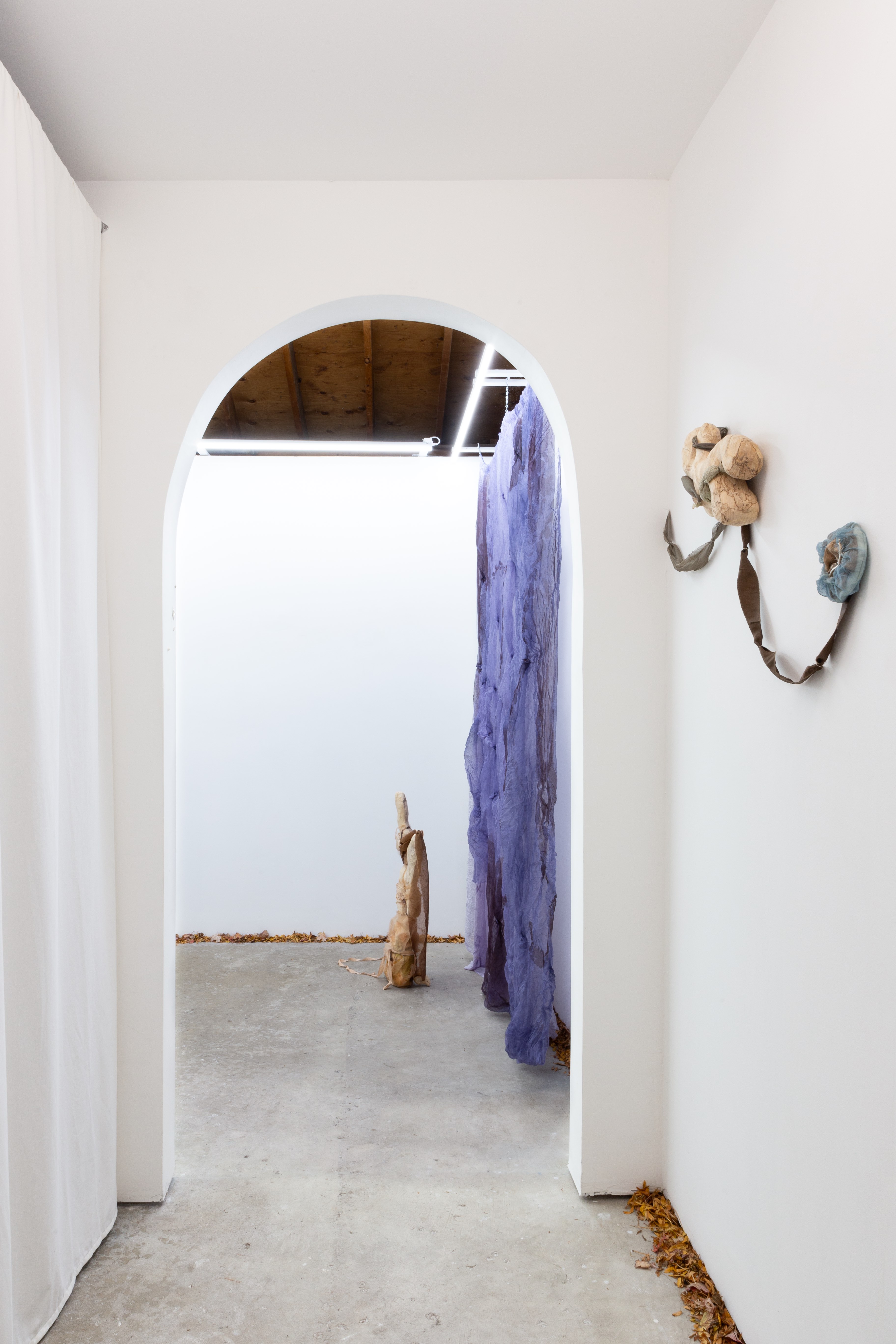

Insall photos by Alison Postma, details Marisa Müsing & Jennifer Laflamme
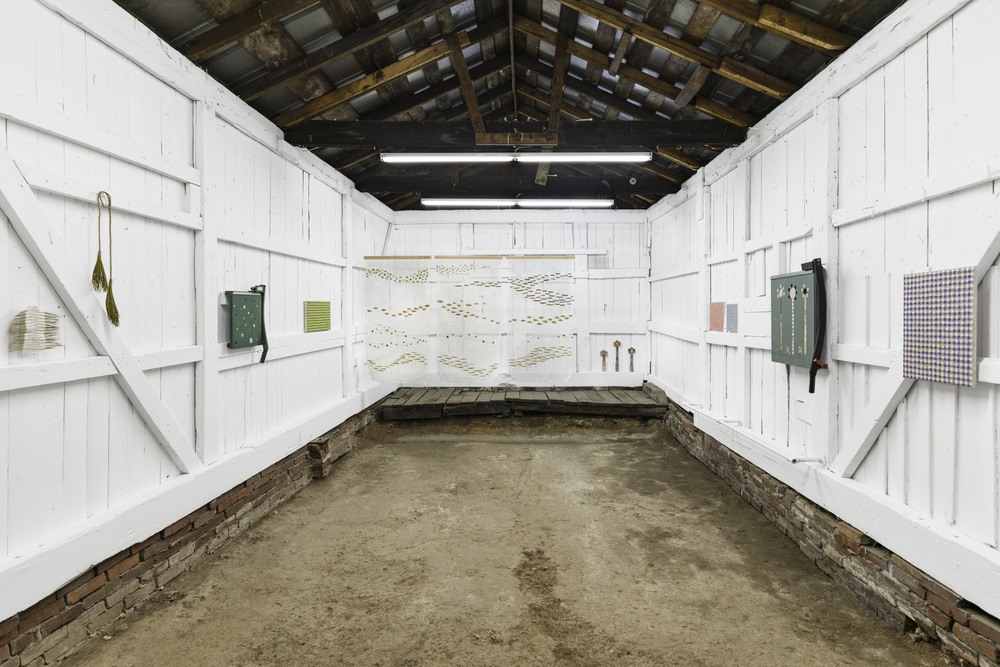
The weather or some other accident:
Michelle Grabner, Kathleen Morris, Bronson Smillie
2-stop touring exhibition:
Bad Water: July 12 - July 29, 2024
Joys: August 2 - 17, 2024

Bad Water documentation

Joys documentation
Unfurling from a rare formal impulse, I’ve been hesitant to trap the idea with the butterfly net of language. So I cut a hole in the mesh right before this. Michelle, Kathleen, and Bronson, three artists with distinct ways, materials, and individual paths to Bad Water. A throughline: an interest in, and perhaps a rebellion against, systems of measure and organization. An attunement to the quotidian, utilitarian, public and private ways grids and other geometric imperatives permeate our lives. A way of asking how we might complicate that truth. I’m interested in how these artists challenge the arbitrary nature and coldness of the grid as foundation by exploring how this pattern, and others like it, are subject to our mess. Noticing the organic, social, and worn-in geometries that coat our environments, we may start to understand how, over time, these templates become us.
Bronson’s new series adopts retired manual paper cutters. Responding to the weathering marks, scrapes, and slivers from their past lives as scores for collaboration, he introduces new forms composed of found objects. His abstract interventions perform a magnetic divination, conceiving new logic systems of color and form that ignite these objects from dormancy. Michelle’s Gingham paintings on burlap reflect her longstanding interest in common textile patterns that permeate visual culture. Their material matter-of-factness reminds me of the heroic linens and domestic textiles passed on through a family. Individuals with perfect patina and remarkable work ethic. Kathleen’s weaving practice incorporates the plants growing in her immediate surroundings. Introducing these unruly collaborators to the rigid structure of her loom, her hanging panels embrace their own compositional logic. A collaboration between technique and natural geometry. Between planting seeds, warping the loom, and air drying the ‘woven’ foliage, the process has multiple points of departure, working across their own temporality adorned with incremental change, craft, and pedagogy.
Our exhibition title comes from “Desire and the Diagrammatic,” by Margeret Iverson. Repurposing a second-hand anecdote, the author recounts the time Gabriel Orozco came across discarded prints of Josef Albers paintings that had been damaged. Crinkled water ringlets had formed on the paper, contravening his iconic square compositions. To Orozco, the exposure to the weather or some other accident made them all the more interesting.
★★★
Bronson Smillie (b.1992, Calgary, Alberta) holds a BFA in Painting and Drawing from Concordia University and currently lives in Tiohti:áke/Montréal. He is a multidisciplinary artist whose practice involves sourcing objects and creating works with materials that no longer fulfil their purpose within late-capitalist modes of consumption. Solo presentations include Almost Begin, Afternoon Projects, Vancouver (2023), A Place for Everything, april april, Brooklyn, NY (2023), Tempo 85, Espace Maurice, Montréal (2022), NADA New York, with april april (2022), and Forever is Closing in, MoMAPS311, Ottawa (2019). Group exhibitions include Depa Archive, Ghent, Belgium (2024); Zalucky Contemporary, Toronto, Canada (2024); Pictura Bienniale, Stewart Hall Gallery, Montreal, Canada (2023); Nicelle Beauchene Gallery, New York, NY (2023); AXENÉO7, Gatineau, Canada (2022); Petrohradská Kolektiv, Prague, Czechia (2021).
Kathleen Morris is a maker and educator working in the field of textiles. Her textiles practice centers on ideas of place-making and ecophenomenology, recognizing the human body as a primary site for experiencing the world, and its fundamental interdependence with innumerable species and organisms. Through her work, Morris explores notions of inhabiting a place, and plumbing the imperceptible web that connects humans to the more than human. The slow pace with which her work unfolds strengthens this sense of reciprocity, and infuses the work with time, depth, and lived understanding. Morris holds a Bachelor of Design from OCAD University, and a Master’s degree from the University of Toronto. Morris was a faculty member in the Material Art and Design program at OCAD University from 2005-2022. Currently, she is a collaborator on a SSHRC international research project entitled Craft and the Digital Turn, as well as a past and present Board member of the Canadian Craft Federation and Craft Ontario.
Michelle Grabner (b. 1962, Oshkosh, WI; lives and works in Chicago and Milwaukee) is an artist, curator, teacher and writer. Her work in painting and sculpture draws equally from a rigorous formal investigation of patterns and domestic life, and a sometimes cheeky flirtation with high modernism's affection for seriality, grids and geometries. Grabner has exhibited extensively over the past three decades, spanning solo exhibitions at galleries including James Cohan, New York; Galerie Gisela Clement, Lotharstraße; Gallery16, San Francisco; Hedreen Gallery at Seattle University, Seattle; Green Gallery, Milwaukee; Rocket Gallery, London; Autumn Space and Shane Campbell Gallery, Chicago. Solo museum exhibitions include Museum of Contemporary Art, Cleveland; Indianapolis Museum of Art; Ulrich Museum, Wichita. She has been included in group exhibitions at the Museum of Contemporary Art, Chicago; Akron Art Museum; Museum of Contemporary Art, Detroit; Walker Art Center, Minneapolis; Tate St. Ives, UK; and Kunsthalle Bern, Switzerland. She is a Professor at the School of the Art Institute of Chicago.
The weather or some other accident
Michelle Grabner, Kathleen Morris, Bronson Smillie
photos: Colin Outridge
Michelle Grabner, Kathleen Morris, Bronson Smillie
photos: Colin Outridge
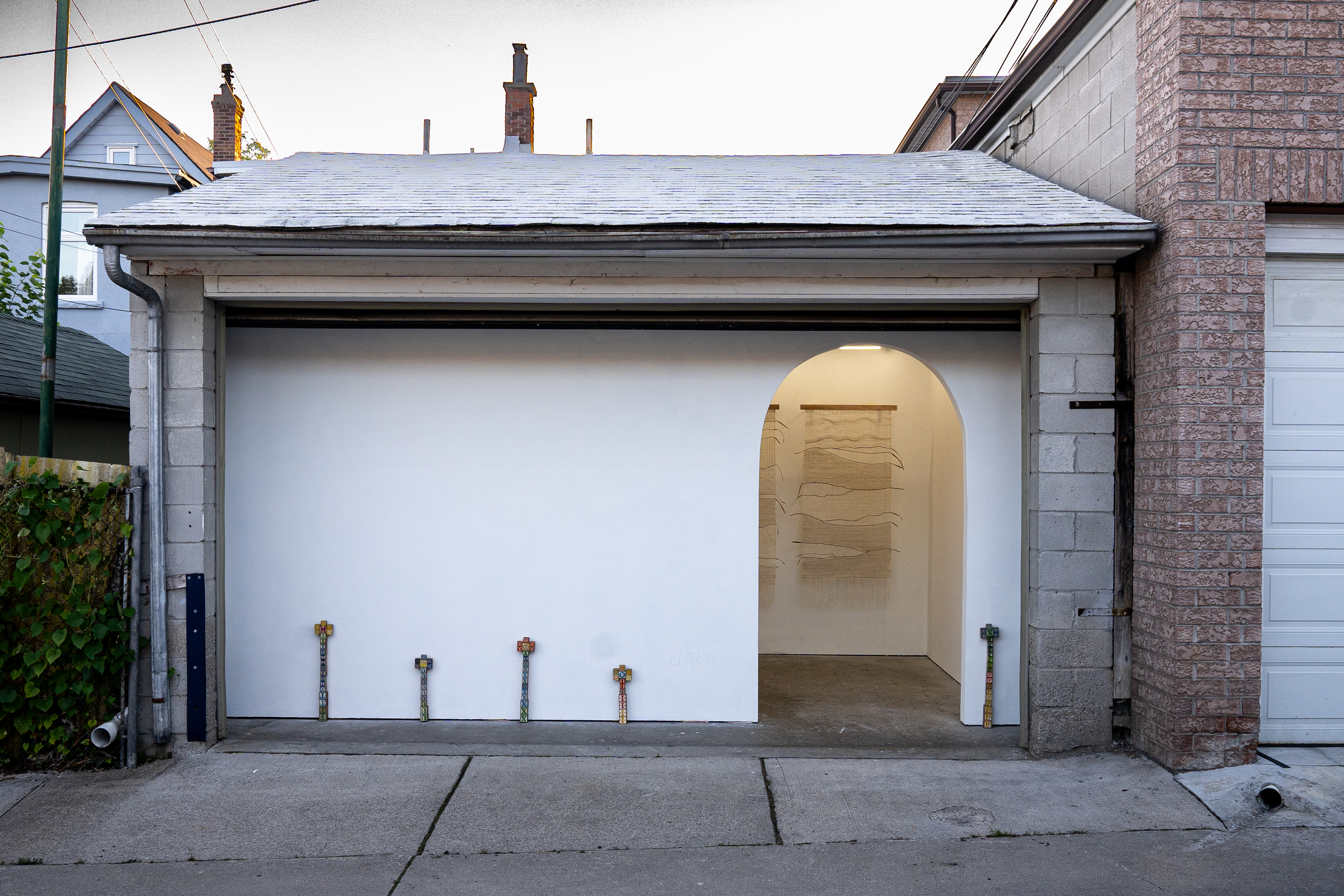
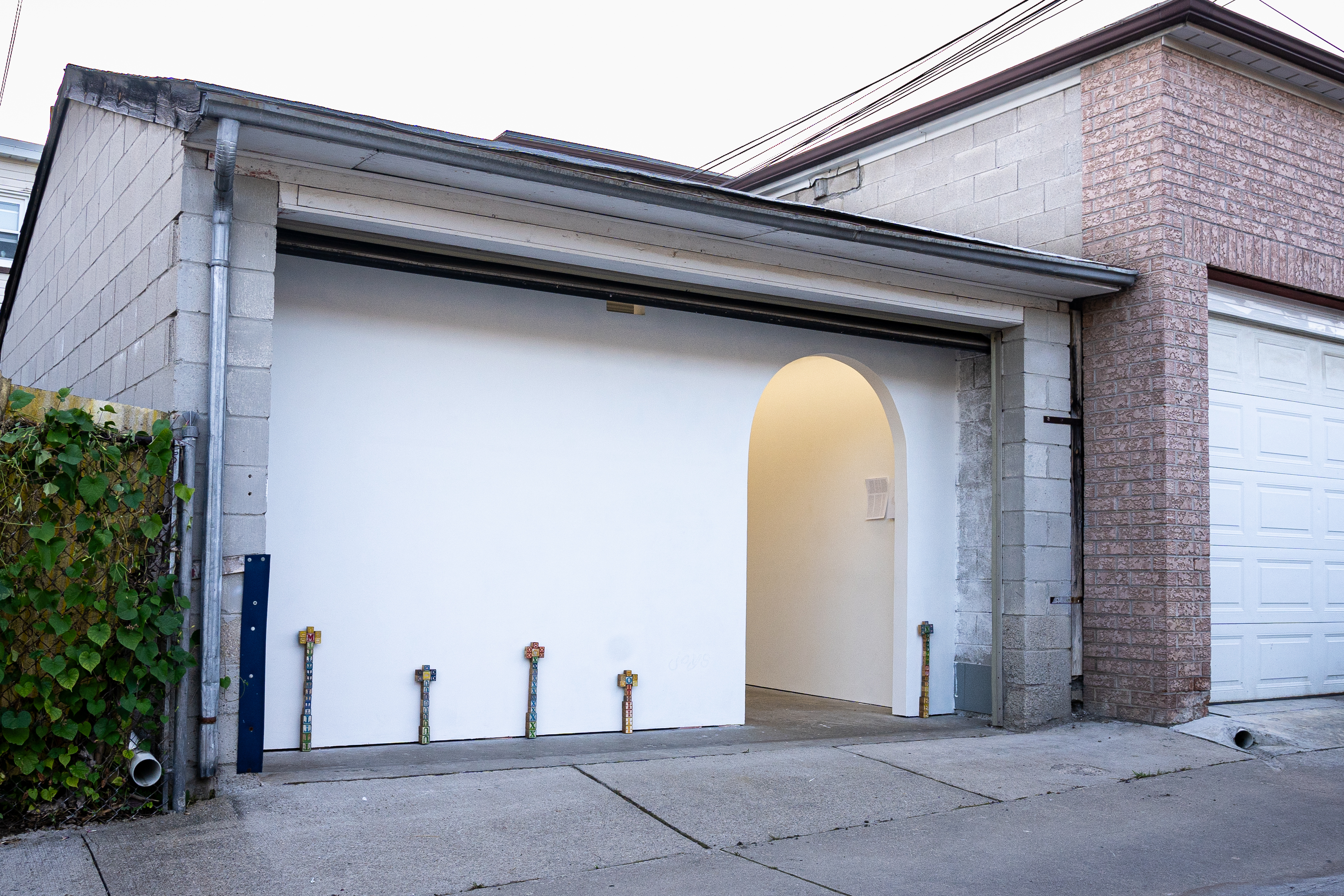



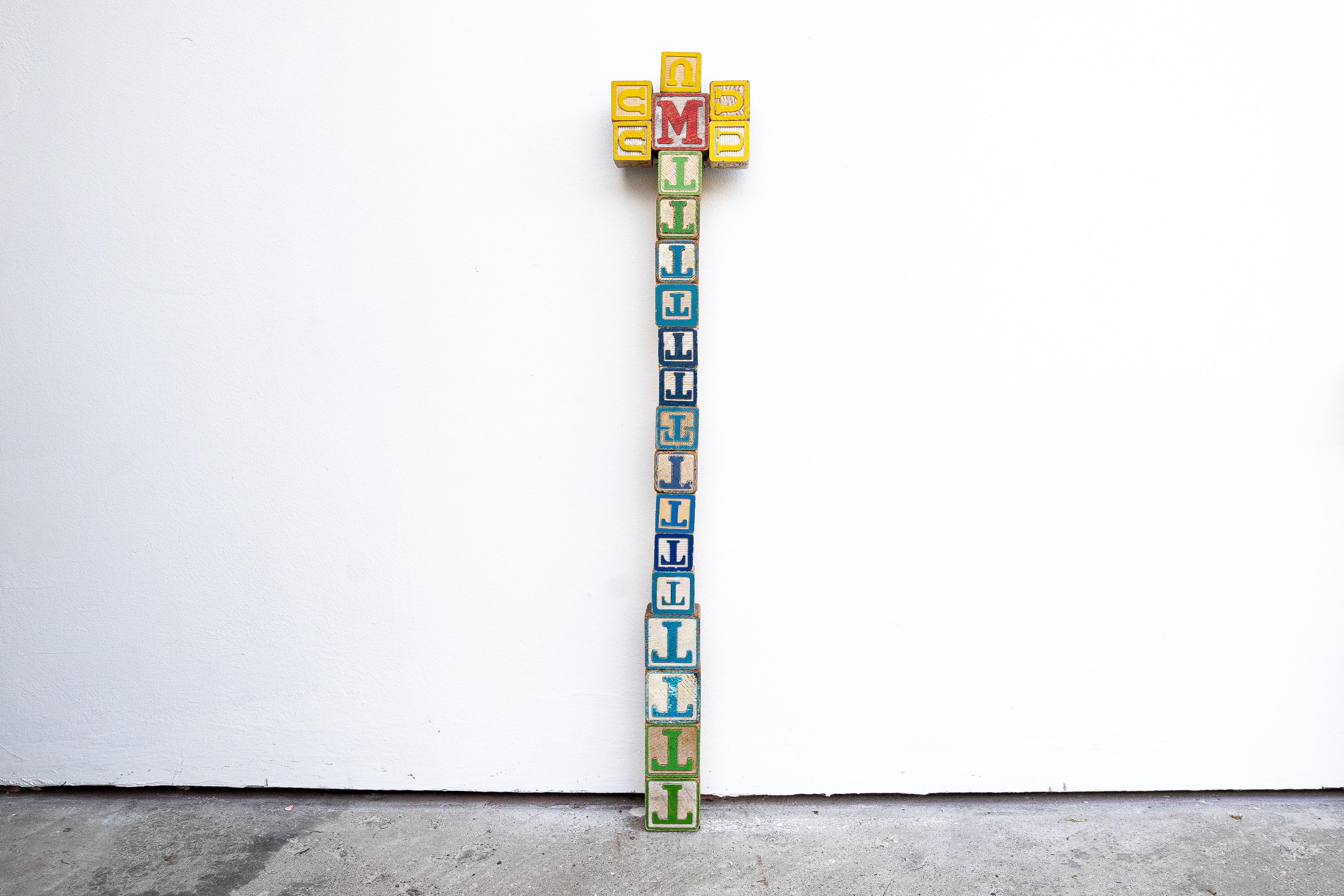



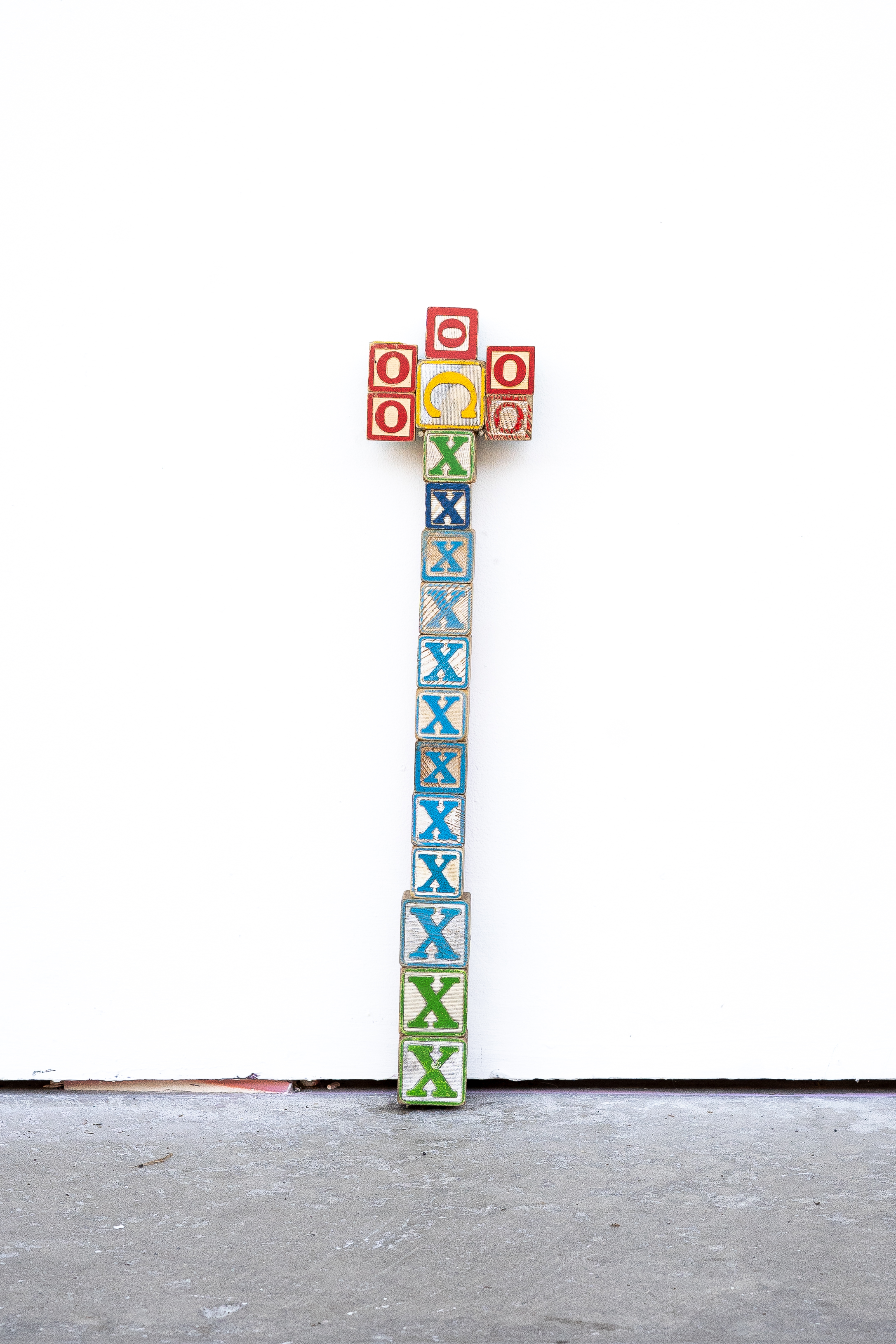
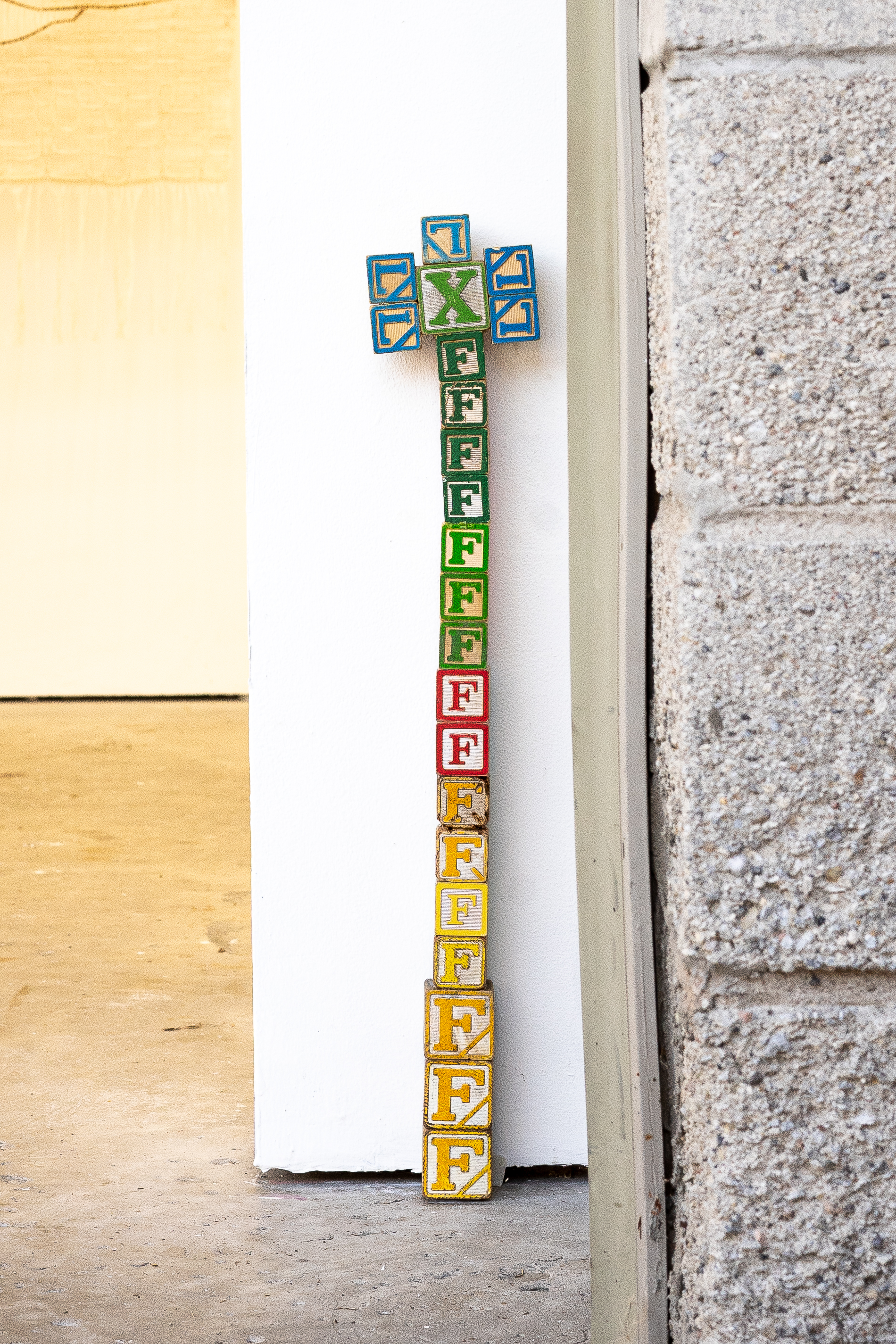

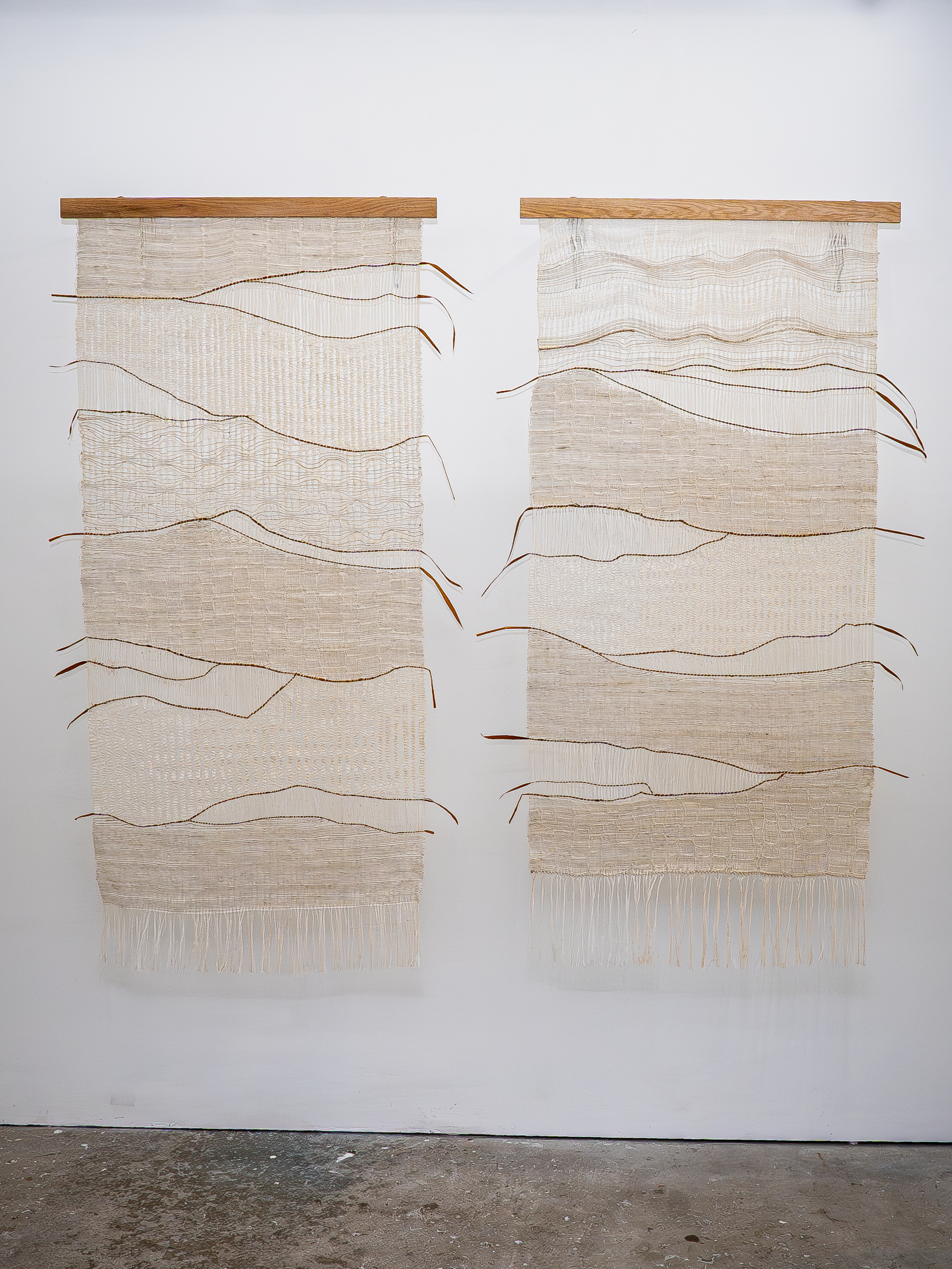


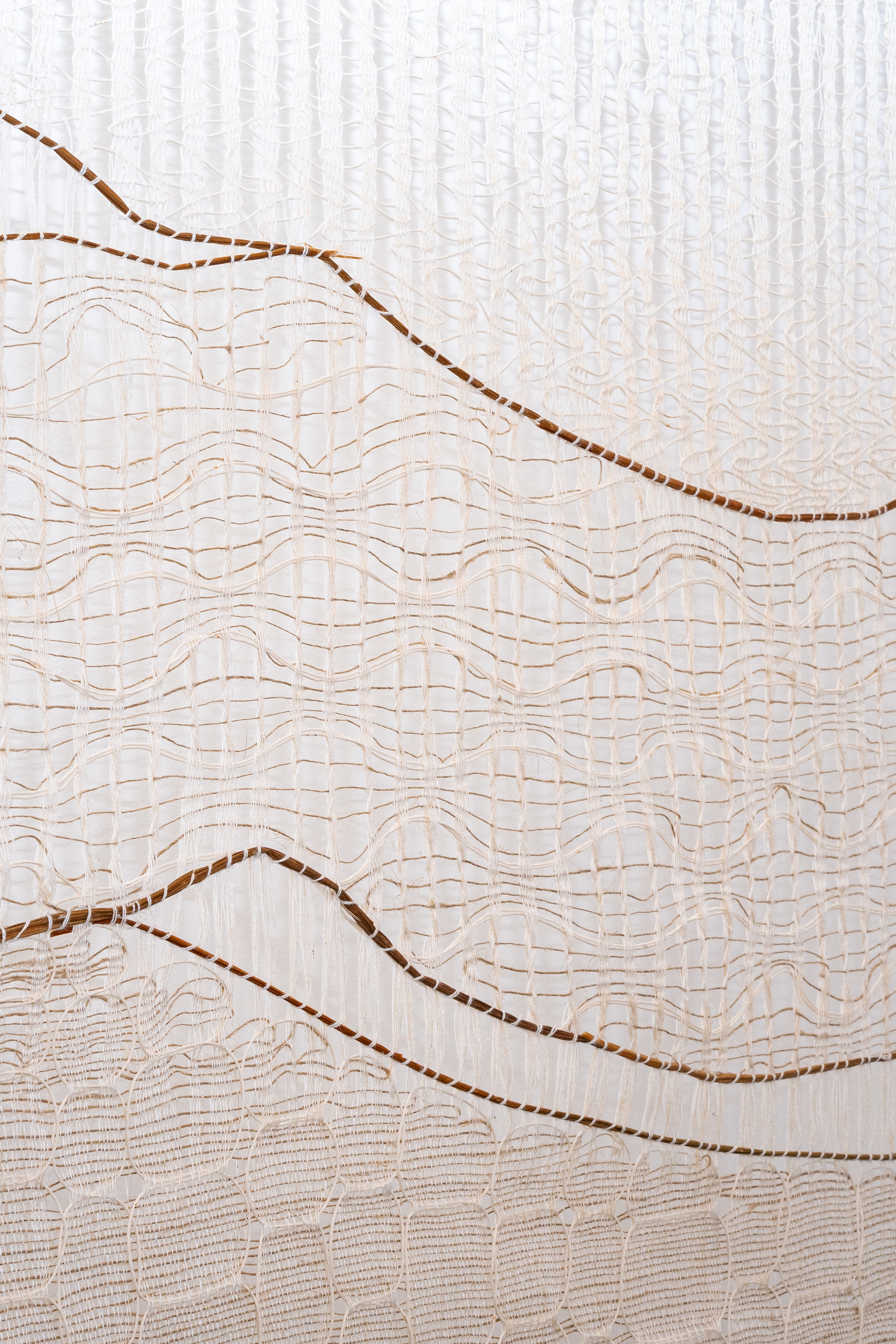


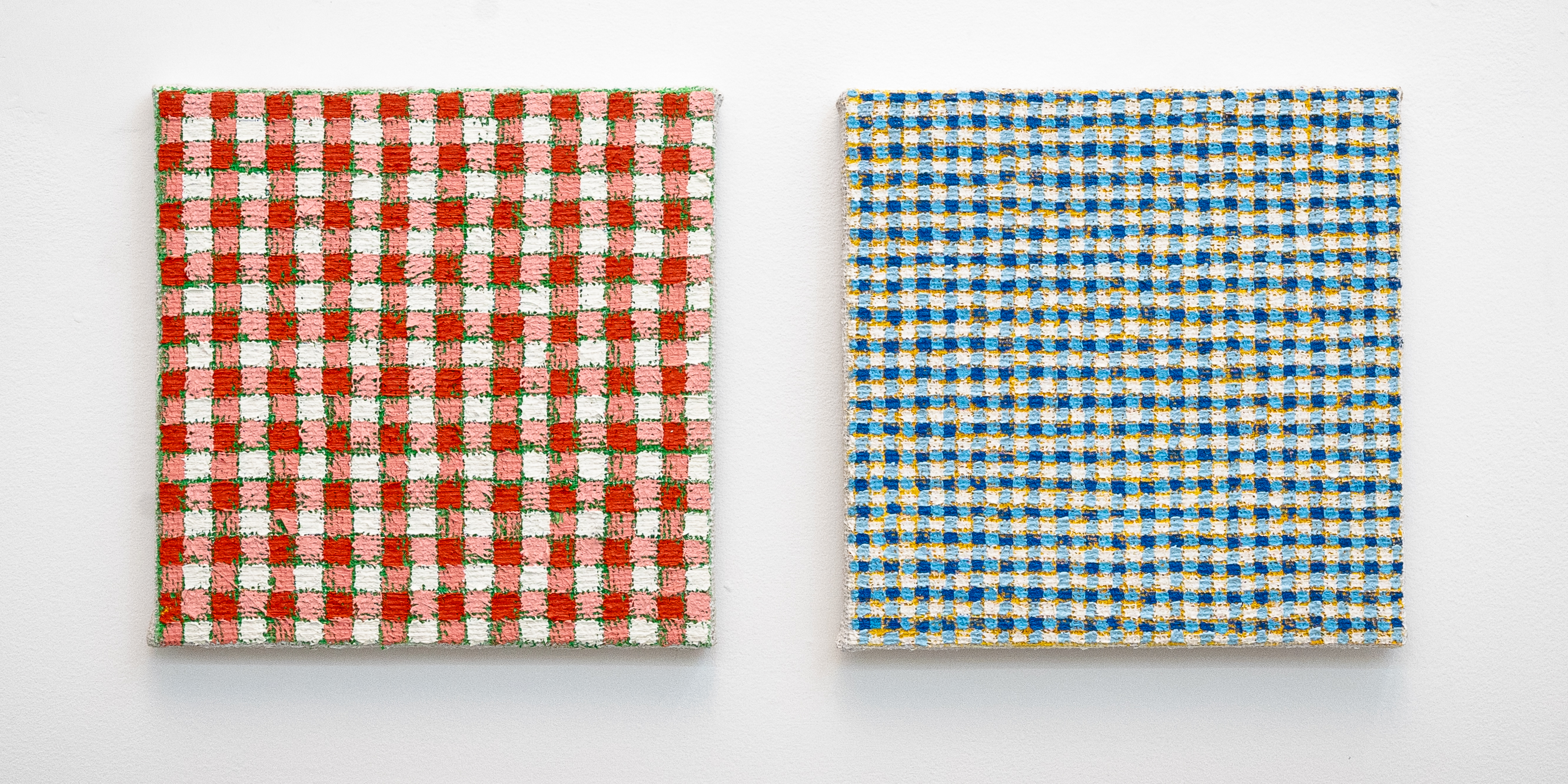






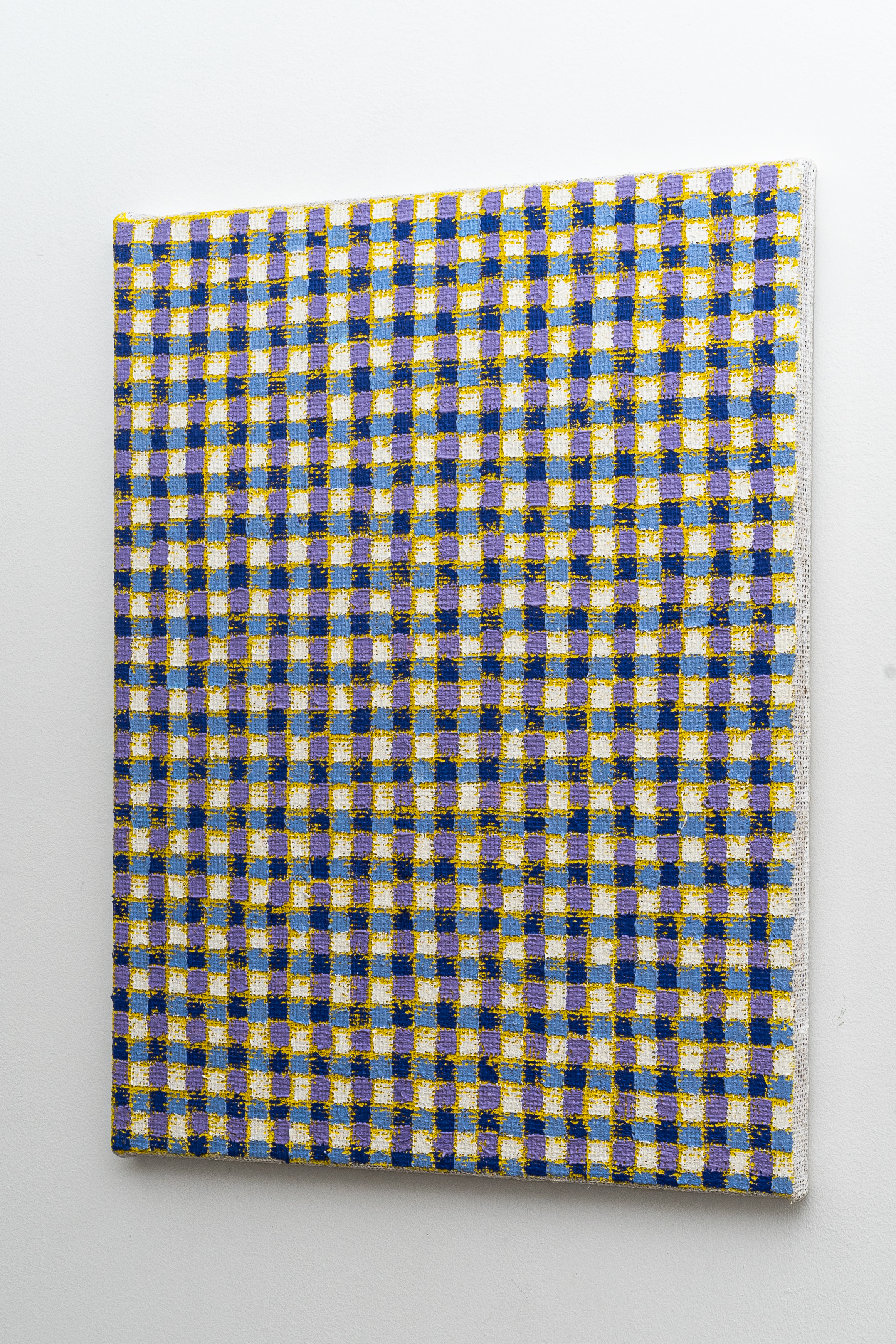
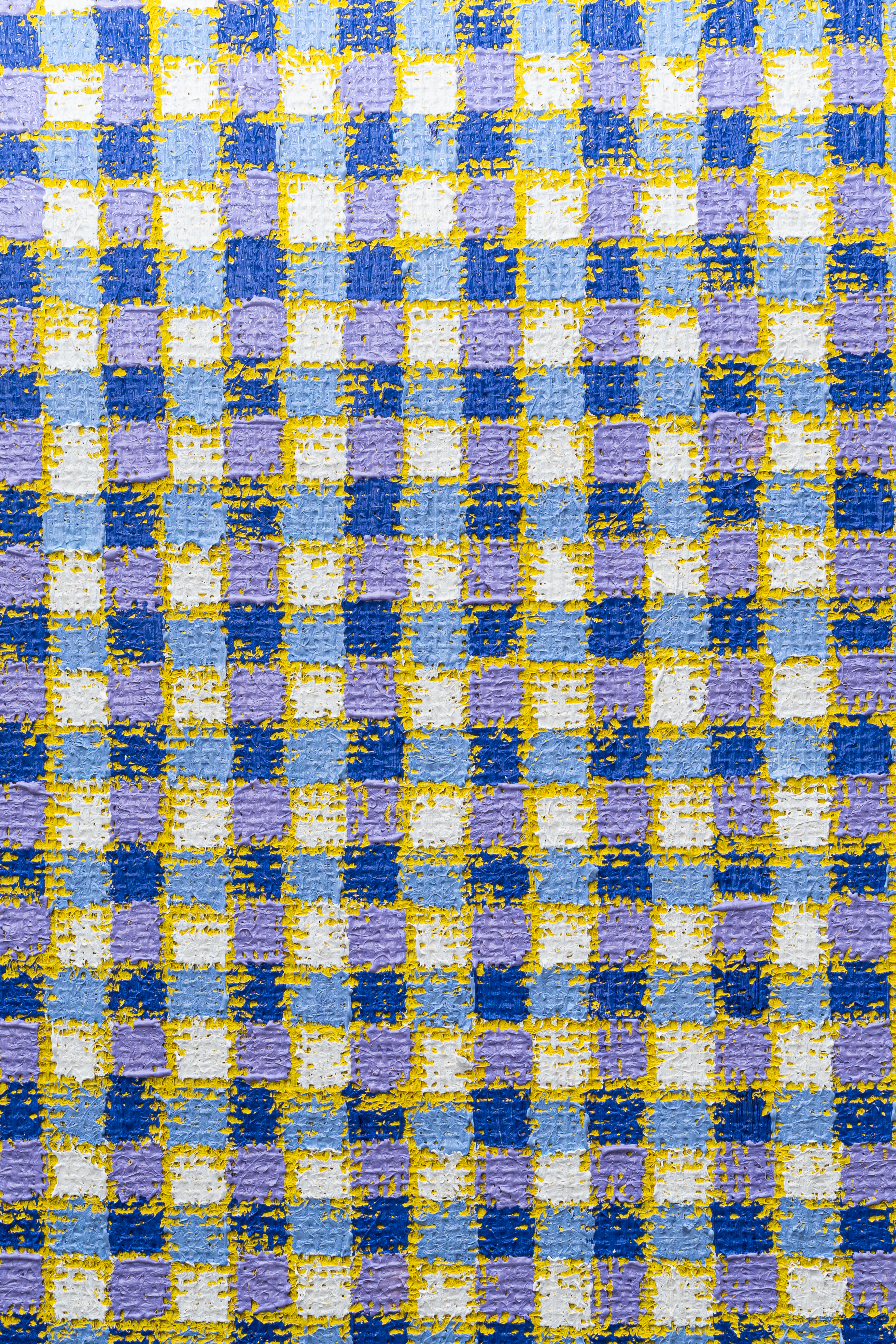
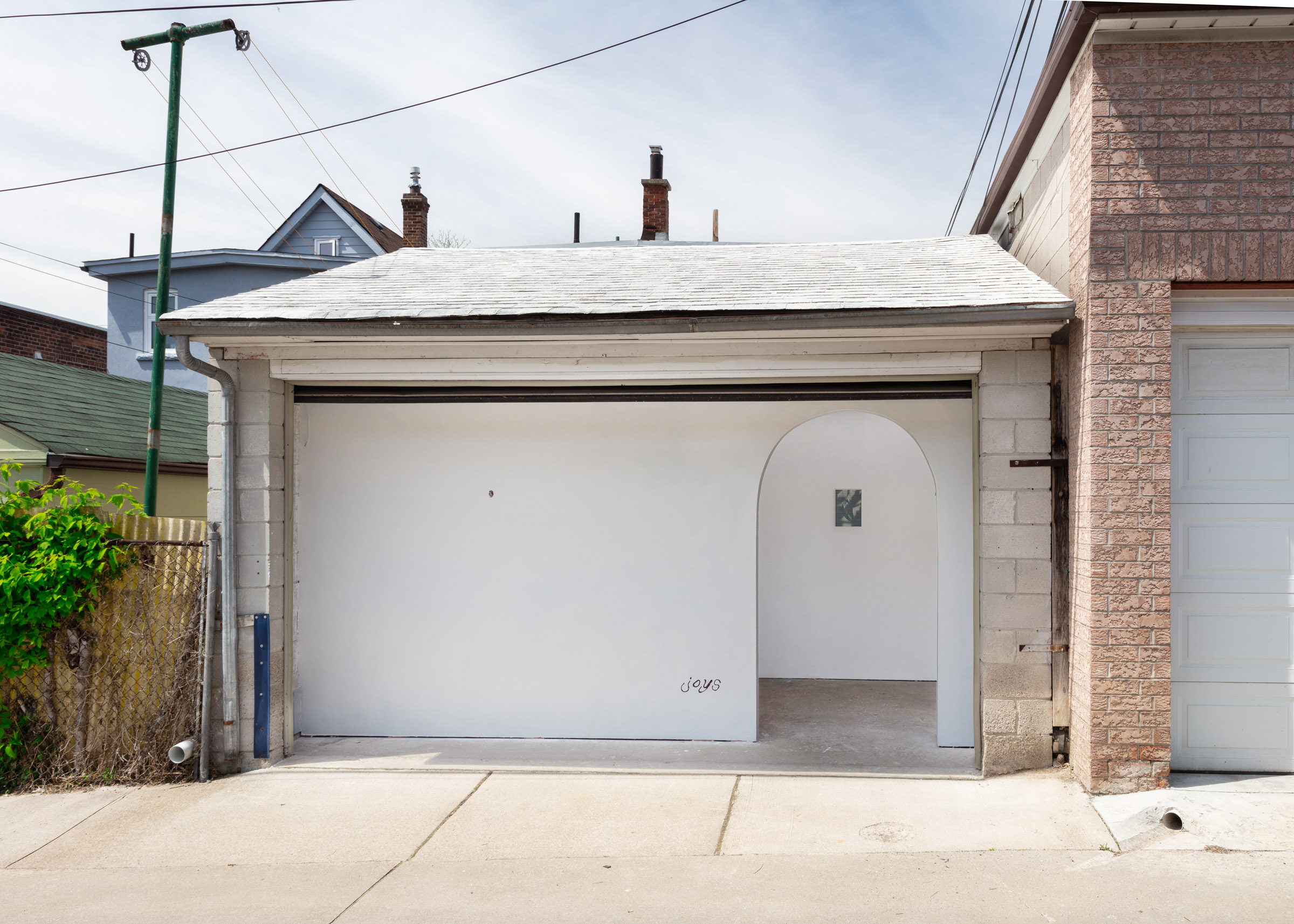
Maja Klaassens: The view is total sea
May 13 - June 24, 2023
Opening reception on May 13, 2023, 3-6 pm
For several years, or maybe her whole life, Maja has been followed by a recurring shape. The dorsal fin, the rose’s thorn, a tooth, a talon, the perfect ocean wave. A triangle with a curved tip; the queering of the strongest shape. For Maja this shape is both abundant and regenerative, though it typically appears as a sliver or a fragment removed from a greater whole. The acts of severance following this form are as mundane as they are violent, illuminating the moral implication of editing as an inevitable process of reduction.
Maja’s work is determined by an obsessive, cyclical archaeology of narrative structure. Across painting, sculpture, installation and lens-based media, she breaks down conventions from novels, films, and online spaces to reveal their function in how we interpret the everyday. Appropriating their techniques, Maja fragments, conceals, enhances, and repeats elements to influence their emotional register. Borrowing from several genres, her work carries multiple valences of meaning and addresses the tensions between opposing forces — romance vs. violence, indoor vs. outdoor, toxicity vs. purity, ephemerality vs. permanence.
Editing is a process of manipulation that advances the process of narrativization. It is an act of distillation – filtering an experience through the sediment of external influences and interpretation, producing a definitive version of events. Through her deeply technical and meditative craftsmanship, Maja constructs an enhanced, edited reality. Her work addresses real places and memories and then casts a veil over them — at best an act of preservation, and at worst, of neutralization. She disguises key referents, perhaps in observation of our collective willingness to lean into fantasy when it provides comfort. Delusion is ultimately a protective reflex.
Maja’s perennial interest in the Gothic genre is palpable in works like Thorn and Little Saga (2023). Thorn is a recurring series of hyper-realistic, disembodied rose thorns. Lifted from their original context, they function as a fluid metaphor for both romance and protection, departing from literary tropes of innocence and purity into something more sinister. The thorns travel freely throughout the spaces they inhabit, finding their own place as weeds do in a garden, posing a small threat while exposing themselves to the risk of being plucked. Little Saga, a photograph of a found “castle by the sea” resembling an old ruin, signifies an ephemeral moment, a fleeting fantasy held by its creator before being abandoned. Like much of Maja's work, Little Saga and Thorn oscillate between indoors and outdoors, emphasizing the lineages of storytelling inherent to the domestic sphere.
The Sea, the Sea and Night Light (both 2023) use different materials but stem from the same line of research into ocean pollution. Using both manmade and luxury items, a designer faucet and an oyster shell, Maja considers the invisible threat of water contamination. The ocean is the vessel through which both items become valued commodity goods. Maja’s interest in Tributyltin (TBT) contamination underpins these sculptures, pointing to the politics of land stewardship and the governance of borderless waters. At once an ominous threat and essential resource, the ocean is itself a vulnerable entity.
Villette (2023), Maja’s debut with video, features an infinite loop of waterfront footage. Villette plays with the format of relaxation videos popular on YouTube — an endless stream of nature content intended to lull its viewers while they Relax, Meditate, Work, or Study. Villette fills the gallery with layered nature soundscapes recorded by and sourced online by the artist, another editorial tactic emphasizing the ways we cultivate our everyday environments. Villette is a simulation of place, raising the question of how we consume nature as a commodity or infinite resource. In subtitled narration, an unidentified protagonist retells an encounter with orcas in a sea cave, a linear tale embedded into a video which appears to otherwise resemble infinity. The work’s suspense could be easily missed, slipping between the cracks as audiences close their eyes and soften their focus.
On first impression, the works presented appear independent. It is only after some time spent with them that their connections begin to surface, the silent conversations they are having through the walls. They demand sensitivity and sustained attention before letting themselves be known, a kind of hermeneutic foreplay. Their uncanny, prop-like quality is a testament to Maja’s precise eye and her understanding that the objects we hold close are key determinants of the plot.
Maja Klaassens (b.1989) works across mediums to explore the influence of literature and film on our experience of reality. Klaassens holds a BFA from the Royal Academy of Art in The Hague (2014), and a MA in Contemporary Art History from the Vrije Universiteit Amsterdam (2021). She recently presented her solo exhibition Orca at Dürst Britt and Mayhew Frontspace, The Hague, and has exhibited at GROVE, London; Parts Project and Billytown, The Hague; ABC Klubhuis, Antwerp; At7, Amsterdam, and art fairs including Poppositions (BE), Juxtapose (DK), and Art The Hague (NL). In 2020, she received the Stroom PRO Research Grant.
The view is total sea is presented as part of of Scotiabank CONTACT Photography Festival’s 2023 Core Program, with generous support from the Consulate General of the Kingdom of the Netherlands in Toronto.
Photography: Laura Findlay
Press:
C Mag Review, Angel Callander
Public Parking Review, Mailey Horner
May 13 - June 24, 2023
Opening reception on May 13, 2023, 3-6 pm
For several years, or maybe her whole life, Maja has been followed by a recurring shape. The dorsal fin, the rose’s thorn, a tooth, a talon, the perfect ocean wave. A triangle with a curved tip; the queering of the strongest shape. For Maja this shape is both abundant and regenerative, though it typically appears as a sliver or a fragment removed from a greater whole. The acts of severance following this form are as mundane as they are violent, illuminating the moral implication of editing as an inevitable process of reduction.
Maja’s work is determined by an obsessive, cyclical archaeology of narrative structure. Across painting, sculpture, installation and lens-based media, she breaks down conventions from novels, films, and online spaces to reveal their function in how we interpret the everyday. Appropriating their techniques, Maja fragments, conceals, enhances, and repeats elements to influence their emotional register. Borrowing from several genres, her work carries multiple valences of meaning and addresses the tensions between opposing forces — romance vs. violence, indoor vs. outdoor, toxicity vs. purity, ephemerality vs. permanence.
Editing is a process of manipulation that advances the process of narrativization. It is an act of distillation – filtering an experience through the sediment of external influences and interpretation, producing a definitive version of events. Through her deeply technical and meditative craftsmanship, Maja constructs an enhanced, edited reality. Her work addresses real places and memories and then casts a veil over them — at best an act of preservation, and at worst, of neutralization. She disguises key referents, perhaps in observation of our collective willingness to lean into fantasy when it provides comfort. Delusion is ultimately a protective reflex.
Maja’s perennial interest in the Gothic genre is palpable in works like Thorn and Little Saga (2023). Thorn is a recurring series of hyper-realistic, disembodied rose thorns. Lifted from their original context, they function as a fluid metaphor for both romance and protection, departing from literary tropes of innocence and purity into something more sinister. The thorns travel freely throughout the spaces they inhabit, finding their own place as weeds do in a garden, posing a small threat while exposing themselves to the risk of being plucked. Little Saga, a photograph of a found “castle by the sea” resembling an old ruin, signifies an ephemeral moment, a fleeting fantasy held by its creator before being abandoned. Like much of Maja's work, Little Saga and Thorn oscillate between indoors and outdoors, emphasizing the lineages of storytelling inherent to the domestic sphere.
The Sea, the Sea and Night Light (both 2023) use different materials but stem from the same line of research into ocean pollution. Using both manmade and luxury items, a designer faucet and an oyster shell, Maja considers the invisible threat of water contamination. The ocean is the vessel through which both items become valued commodity goods. Maja’s interest in Tributyltin (TBT) contamination underpins these sculptures, pointing to the politics of land stewardship and the governance of borderless waters. At once an ominous threat and essential resource, the ocean is itself a vulnerable entity.
Villette (2023), Maja’s debut with video, features an infinite loop of waterfront footage. Villette plays with the format of relaxation videos popular on YouTube — an endless stream of nature content intended to lull its viewers while they Relax, Meditate, Work, or Study. Villette fills the gallery with layered nature soundscapes recorded by and sourced online by the artist, another editorial tactic emphasizing the ways we cultivate our everyday environments. Villette is a simulation of place, raising the question of how we consume nature as a commodity or infinite resource. In subtitled narration, an unidentified protagonist retells an encounter with orcas in a sea cave, a linear tale embedded into a video which appears to otherwise resemble infinity. The work’s suspense could be easily missed, slipping between the cracks as audiences close their eyes and soften their focus.
On first impression, the works presented appear independent. It is only after some time spent with them that their connections begin to surface, the silent conversations they are having through the walls. They demand sensitivity and sustained attention before letting themselves be known, a kind of hermeneutic foreplay. Their uncanny, prop-like quality is a testament to Maja’s precise eye and her understanding that the objects we hold close are key determinants of the plot.
Maja Klaassens (b.1989) works across mediums to explore the influence of literature and film on our experience of reality. Klaassens holds a BFA from the Royal Academy of Art in The Hague (2014), and a MA in Contemporary Art History from the Vrije Universiteit Amsterdam (2021). She recently presented her solo exhibition Orca at Dürst Britt and Mayhew Frontspace, The Hague, and has exhibited at GROVE, London; Parts Project and Billytown, The Hague; ABC Klubhuis, Antwerp; At7, Amsterdam, and art fairs including Poppositions (BE), Juxtapose (DK), and Art The Hague (NL). In 2020, she received the Stroom PRO Research Grant.
The view is total sea is presented as part of of Scotiabank CONTACT Photography Festival’s 2023 Core Program, with generous support from the Consulate General of the Kingdom of the Netherlands in Toronto.
Photography: Laura Findlay
Press:
C Mag Review, Angel Callander
Public Parking Review, Mailey Horner






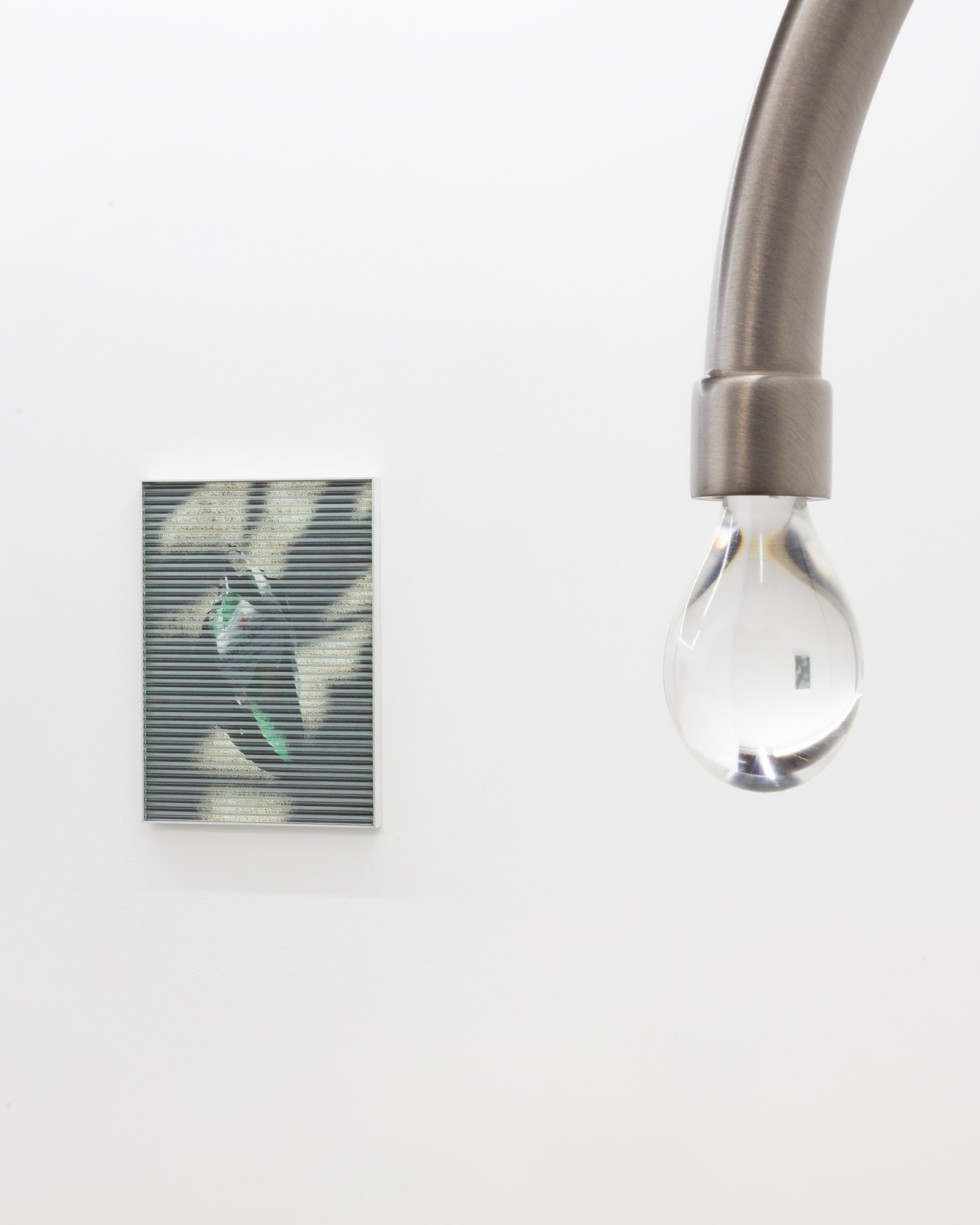








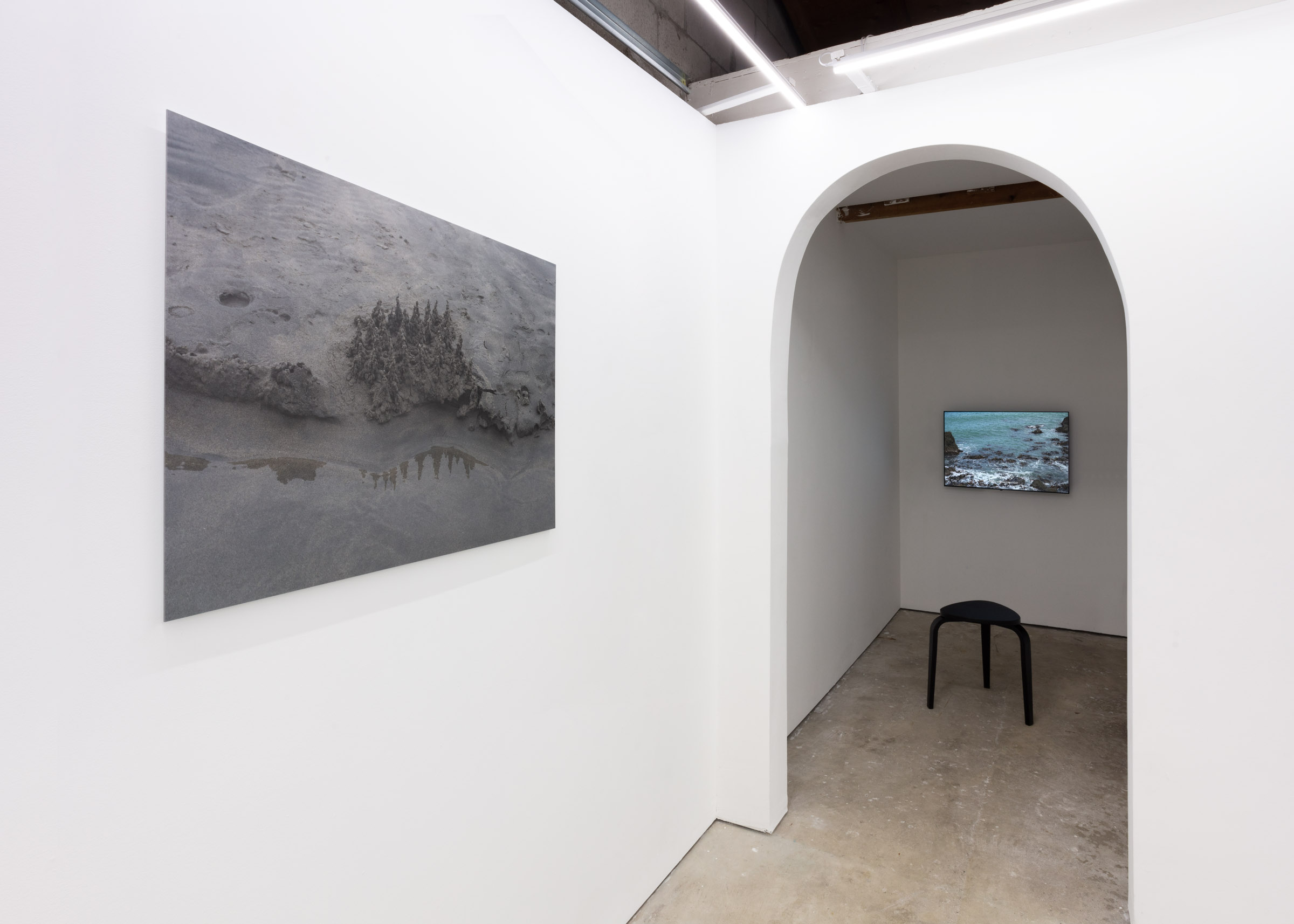
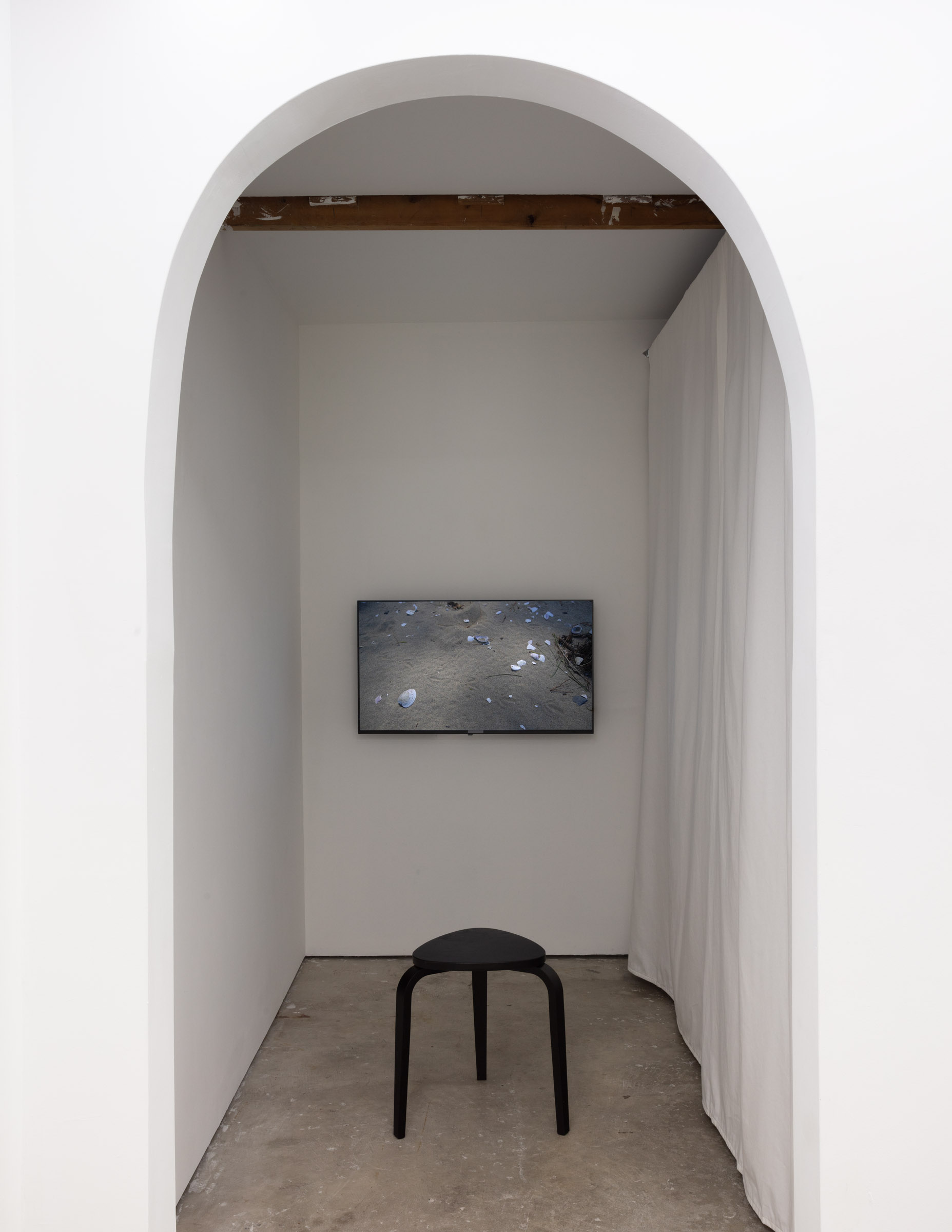
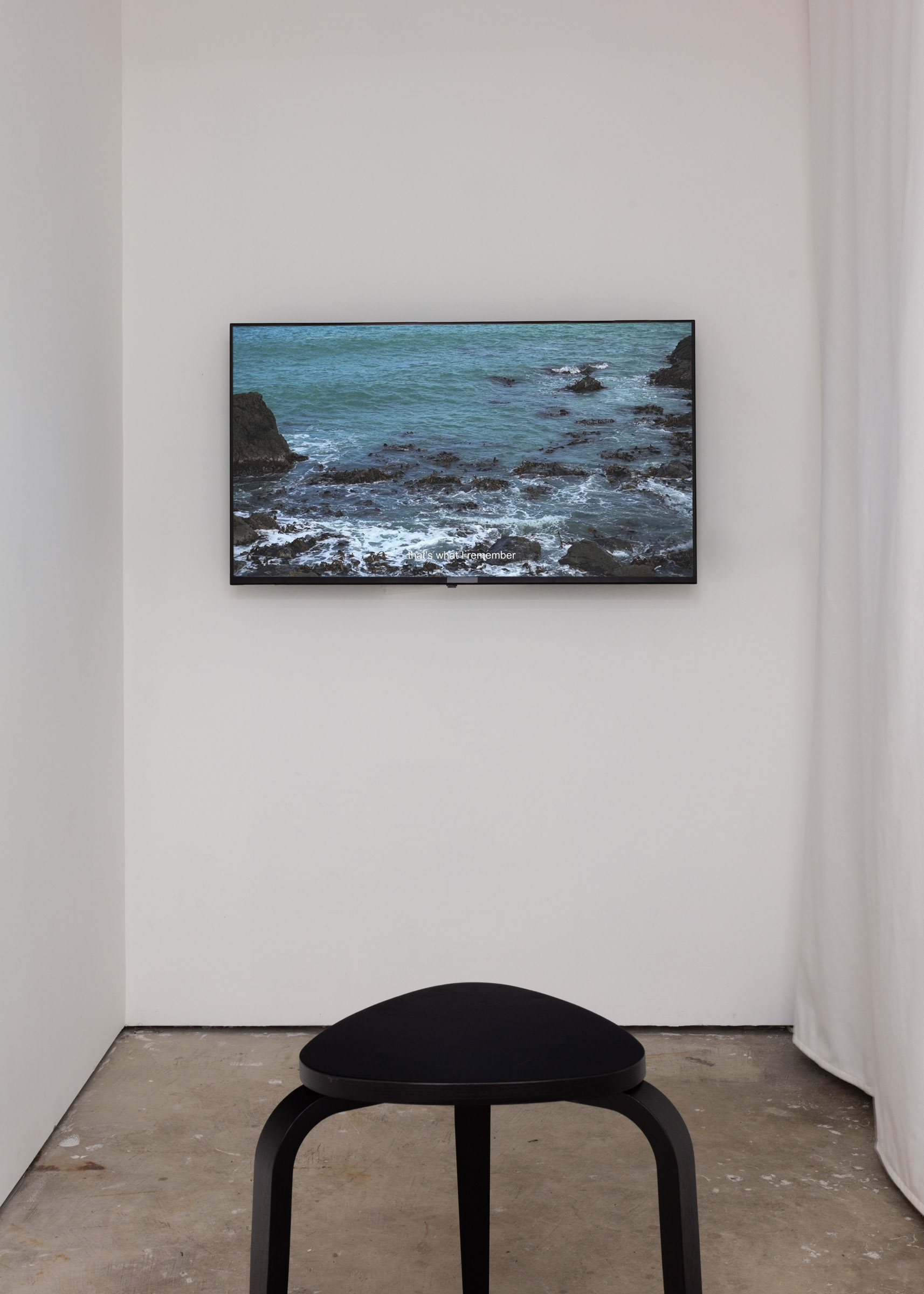









The Consulate General of the Kingdom of the Netherlands in Toronto aims to support partnerships, inspire collaboration and contribute to cultural activities in Canada by introducing Dutch innovation in the creative sector to the Canadian public.

Alyssa Alikpala: Tracings: in situ
September 21 - October 8, 2023
Joys is pleased to present Tracings: in situ, a solo exhibition by Alyssa Alikpala developed through an experimental two-week residency at the gallery. Through a variety of techniques and materials, Alyssa’s work champions a framework for interpreting unspoken connections between the built and natural environments. Inspired by ecological, seasonal, and corporeal cycles and rhythms, the body of work in this exhibition incorporates plant materials sourced from the laneway just in time for the Autumn Equinox. Alyssa’s work is powerful in its ability to fuse form and concept. Her material engagements, crafted through hours of cyclical tasks and methodical labour, are a testament to patience and process. Works in Tracings: in situ are as much a product of doing as of undoing, finding humility and hope in indeterminate states as well as mortality itself.
Tracings: in situ is the first edition of Tracings, an experimental and infrequent residency that invites artists to respond to the Joys laneway in whatever fashion suits their practice. With this exhibition, Joys is proud to participate in Gallery Weekend Toronto (AGAC).
Exhibition text:
Each year at the peak of the Melt time, Button and Twig flew the neighbourhood. Braving mercurial temperatures and short-lived snowfalls, the siblings always looked forward to that first soar of the year over the familiar boxy streets and patchy rooftops of Wallace and Lansdowne.
Though they were both adults, Button was older, which she never let Twig forget during their mid-Melt jaunts. “Watch out for the ice!” Button would say, causing Twig to roll her eyes and click her silver beak in frustration. Button loved the rediscovery of forgotten garden boxes and feeders in which you could sometimes find a scattering of seeds left over from the last Warm time. Twig loved watching the Walkers, enjoyed their different gaits and the funny ways they held their limbs.
The reward for Twig and Button’s early trips into the neighbourhood airspace was that they could choose the very best perch points without much competition. This year, they settled on a laneway spot on a power line with a perfect view into plenty of boxes and pavement.
The pavement was well used by Walkers on two and four legs, as well as several Rollers. One rolled her baby down the laneway every day, singing lullabies that Twig tried to learn by ear and interpret in her own style. Backyard gardens waxed and waned. The siblings were often the first to sample the ripening fruit their neighbours tended to.
Near the end of the Warm time, Twig noticed a Walker coming and going from the building with the archway. Of all the bizarre Walker activities Button and Twig witnessed at that building, hers were the most interesting. For days and days, the siblings watched the Walker navigate the entire length of the laneway, sometimes a few times in a row, pausing to look at the plants poking out between concrete or climbing wire fences. After some contemplation, she would carefully remove a few strands, and carry them back to the building with the archway.
What intrigued the siblings about her behaviour was that it seemed so familiar. She wasn’t using the laneway for travel. Button noticed that she never took more than she could hold in one hand and always left plenty behind for her and Twig to gnaw at if hunger befell them. They admired her moderation. “She must be building a nest,” Twig thought aloud.
Most days, the Walker would leave the big door open, allowing a host of sounds and smells to trickle out into the airspace. Twig looked forward to these interruptions to her daily routine, which had grown stiff and monotonous over the past few months. One afternoon, a long, appetizing line of Goldenrod appeared along the front wall. She appreciated the gentle discordance the Walker seemed to propagate. Button was the more dubious of the pair, but her desire to understand was quickly outgrowing her apprehension.
One quiet evening, as the blue moon rose, Twig’s curiosity overcame her. A cold light shone from the building’s archway. She was still inside working. Twig gave Button a daring look and swooped down to the pavement near the building. Button followed closely. Together they hopped toward the archway and peeked around the corner. They couldn’t believe the scene of the nest inside. Twig had to get closer. When the Walker wasn’t looking, Twig and Button darted into the building, flying directly toward the upper landing of the loft. Their hearts were racing.
Before they could plan their next move, the lights switched off. The siblings heard a mechanical hum and the door began to close. Frightened and satisfied in equal measure, Twig and Button turned to face one another.
Alyssa Alikpala is an interdisciplinary artist, designer, and researcher working across sound, sculpture, fibre, installation, and ephemeral forms. Focusing on process, cycles, and indeterminacy, her work explores the body’s interaction with, and traces left in, the environment.
Alyssa is currently based in Toronto, Canada and has recently exhibited at Open Studio, Myta Sayo Gallery, Project 107, Gallery TPW (Toronto), and participated internationally in residence at La Napoule Art Foundation (France). Her work has been included in Images Festival, Scotiabank Contact Festival, and publications such as Studio Magazine and Newest Magazine.
Alikpala would like to acknowledge the generous support of the Ontario Arts Council and the Canada Council for the Arts.
Photos by Holly M. Chang
Artist talk: Alyssa Alikpala In Conversation (September 23, 2023)
![]()
![]()
![]()
![]()
![]()
![]()
![]()
![]()
![]()
![]()
![]()
![]()
![]()
![]()
![]()
![]()
![]()
![]()
September 21 - October 8, 2023
Joys is pleased to present Tracings: in situ, a solo exhibition by Alyssa Alikpala developed through an experimental two-week residency at the gallery. Through a variety of techniques and materials, Alyssa’s work champions a framework for interpreting unspoken connections between the built and natural environments. Inspired by ecological, seasonal, and corporeal cycles and rhythms, the body of work in this exhibition incorporates plant materials sourced from the laneway just in time for the Autumn Equinox. Alyssa’s work is powerful in its ability to fuse form and concept. Her material engagements, crafted through hours of cyclical tasks and methodical labour, are a testament to patience and process. Works in Tracings: in situ are as much a product of doing as of undoing, finding humility and hope in indeterminate states as well as mortality itself.
Tracings: in situ is the first edition of Tracings, an experimental and infrequent residency that invites artists to respond to the Joys laneway in whatever fashion suits their practice. With this exhibition, Joys is proud to participate in Gallery Weekend Toronto (AGAC).
Exhibition text:
Each year at the peak of the Melt time, Button and Twig flew the neighbourhood. Braving mercurial temperatures and short-lived snowfalls, the siblings always looked forward to that first soar of the year over the familiar boxy streets and patchy rooftops of Wallace and Lansdowne.
Though they were both adults, Button was older, which she never let Twig forget during their mid-Melt jaunts. “Watch out for the ice!” Button would say, causing Twig to roll her eyes and click her silver beak in frustration. Button loved the rediscovery of forgotten garden boxes and feeders in which you could sometimes find a scattering of seeds left over from the last Warm time. Twig loved watching the Walkers, enjoyed their different gaits and the funny ways they held their limbs.
The reward for Twig and Button’s early trips into the neighbourhood airspace was that they could choose the very best perch points without much competition. This year, they settled on a laneway spot on a power line with a perfect view into plenty of boxes and pavement.
The pavement was well used by Walkers on two and four legs, as well as several Rollers. One rolled her baby down the laneway every day, singing lullabies that Twig tried to learn by ear and interpret in her own style. Backyard gardens waxed and waned. The siblings were often the first to sample the ripening fruit their neighbours tended to.
Near the end of the Warm time, Twig noticed a Walker coming and going from the building with the archway. Of all the bizarre Walker activities Button and Twig witnessed at that building, hers were the most interesting. For days and days, the siblings watched the Walker navigate the entire length of the laneway, sometimes a few times in a row, pausing to look at the plants poking out between concrete or climbing wire fences. After some contemplation, she would carefully remove a few strands, and carry them back to the building with the archway.
What intrigued the siblings about her behaviour was that it seemed so familiar. She wasn’t using the laneway for travel. Button noticed that she never took more than she could hold in one hand and always left plenty behind for her and Twig to gnaw at if hunger befell them. They admired her moderation. “She must be building a nest,” Twig thought aloud.
Most days, the Walker would leave the big door open, allowing a host of sounds and smells to trickle out into the airspace. Twig looked forward to these interruptions to her daily routine, which had grown stiff and monotonous over the past few months. One afternoon, a long, appetizing line of Goldenrod appeared along the front wall. She appreciated the gentle discordance the Walker seemed to propagate. Button was the more dubious of the pair, but her desire to understand was quickly outgrowing her apprehension.
One quiet evening, as the blue moon rose, Twig’s curiosity overcame her. A cold light shone from the building’s archway. She was still inside working. Twig gave Button a daring look and swooped down to the pavement near the building. Button followed closely. Together they hopped toward the archway and peeked around the corner. They couldn’t believe the scene of the nest inside. Twig had to get closer. When the Walker wasn’t looking, Twig and Button darted into the building, flying directly toward the upper landing of the loft. Their hearts were racing.
Before they could plan their next move, the lights switched off. The siblings heard a mechanical hum and the door began to close. Frightened and satisfied in equal measure, Twig and Button turned to face one another.
Alyssa Alikpala is an interdisciplinary artist, designer, and researcher working across sound, sculpture, fibre, installation, and ephemeral forms. Focusing on process, cycles, and indeterminacy, her work explores the body’s interaction with, and traces left in, the environment.
Alyssa is currently based in Toronto, Canada and has recently exhibited at Open Studio, Myta Sayo Gallery, Project 107, Gallery TPW (Toronto), and participated internationally in residence at La Napoule Art Foundation (France). Her work has been included in Images Festival, Scotiabank Contact Festival, and publications such as Studio Magazine and Newest Magazine.
Alikpala would like to acknowledge the generous support of the Ontario Arts Council and the Canada Council for the Arts.
Photos by Holly M. Chang
Artist talk: Alyssa Alikpala In Conversation (September 23, 2023)
